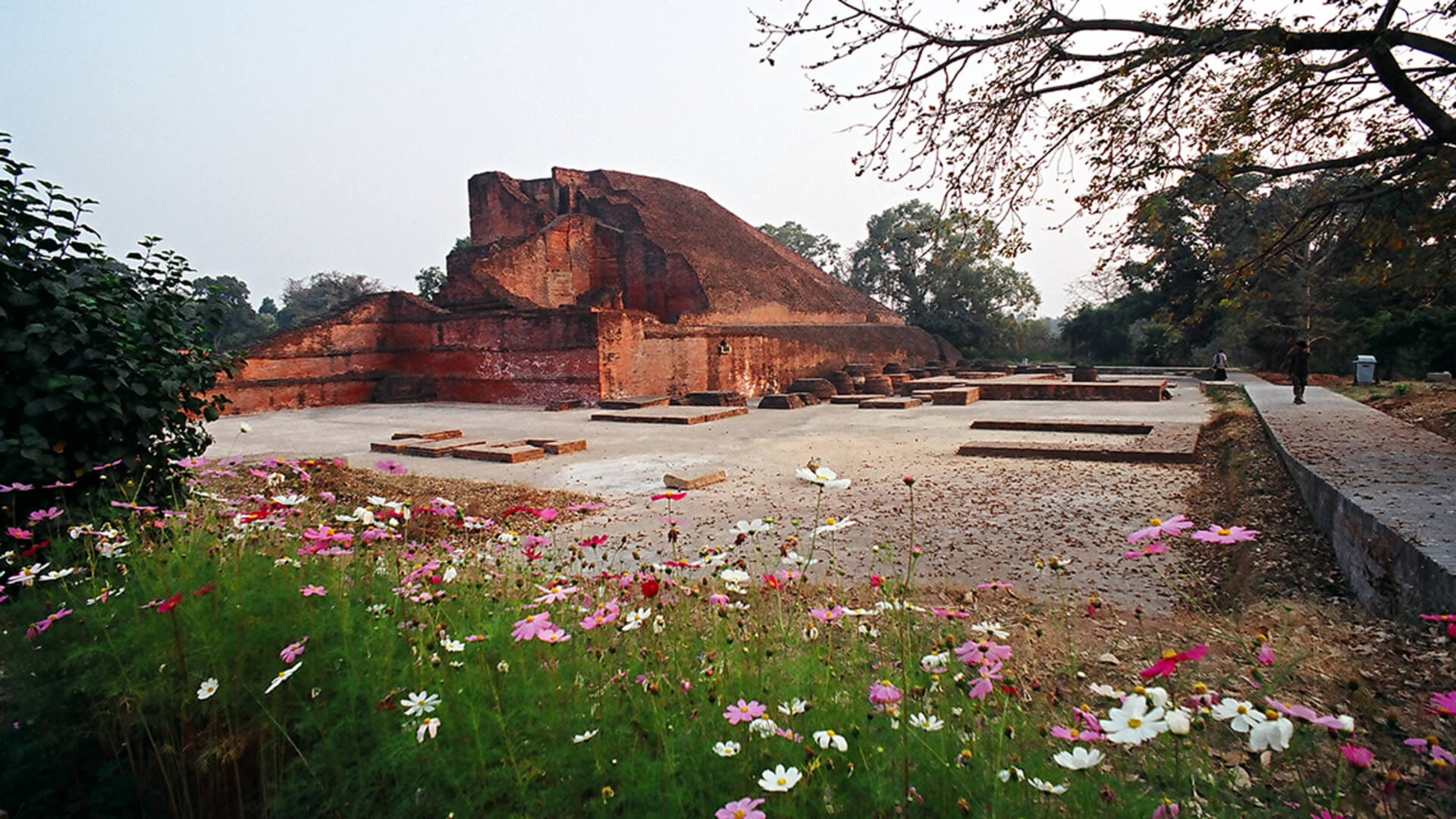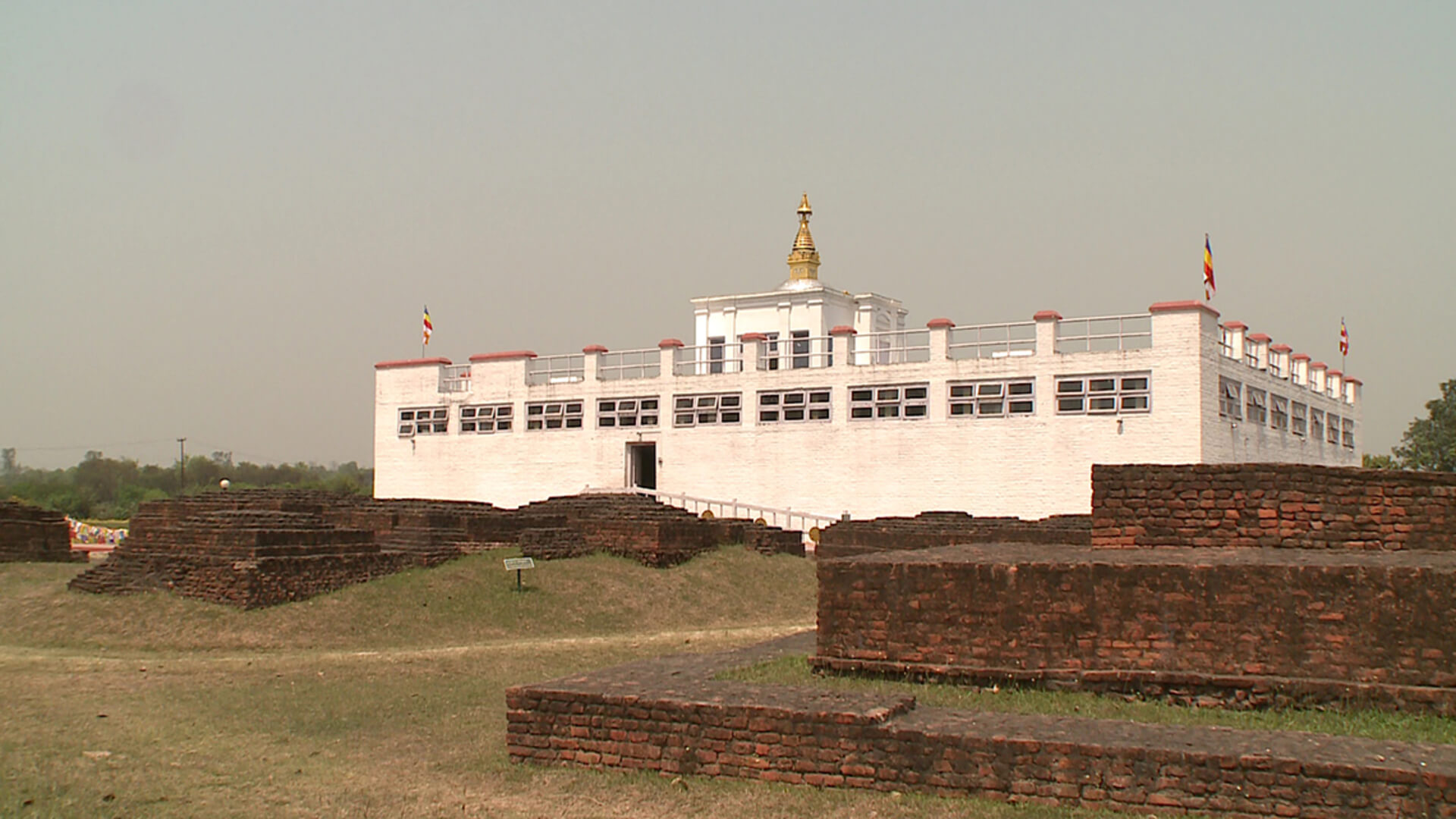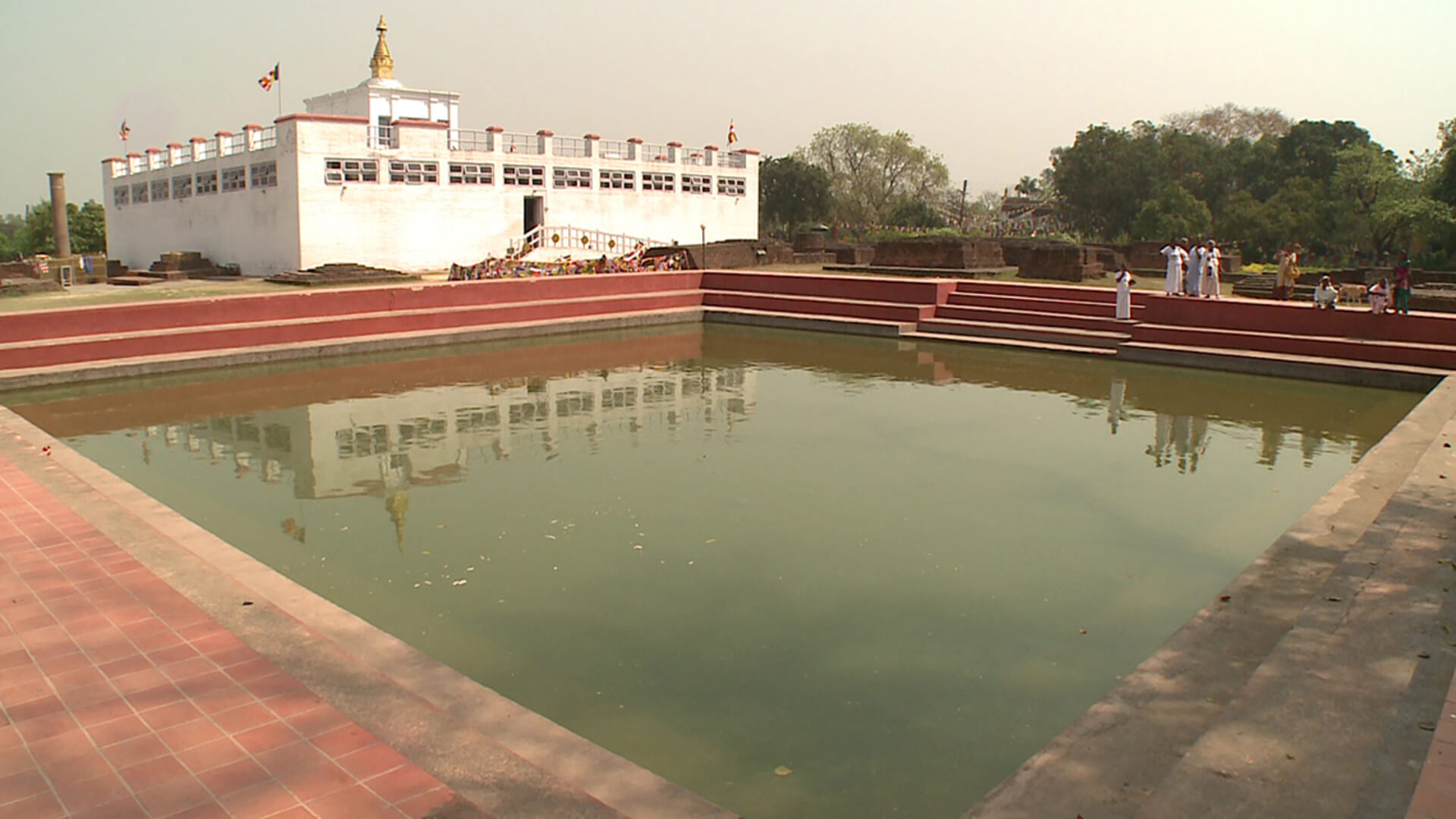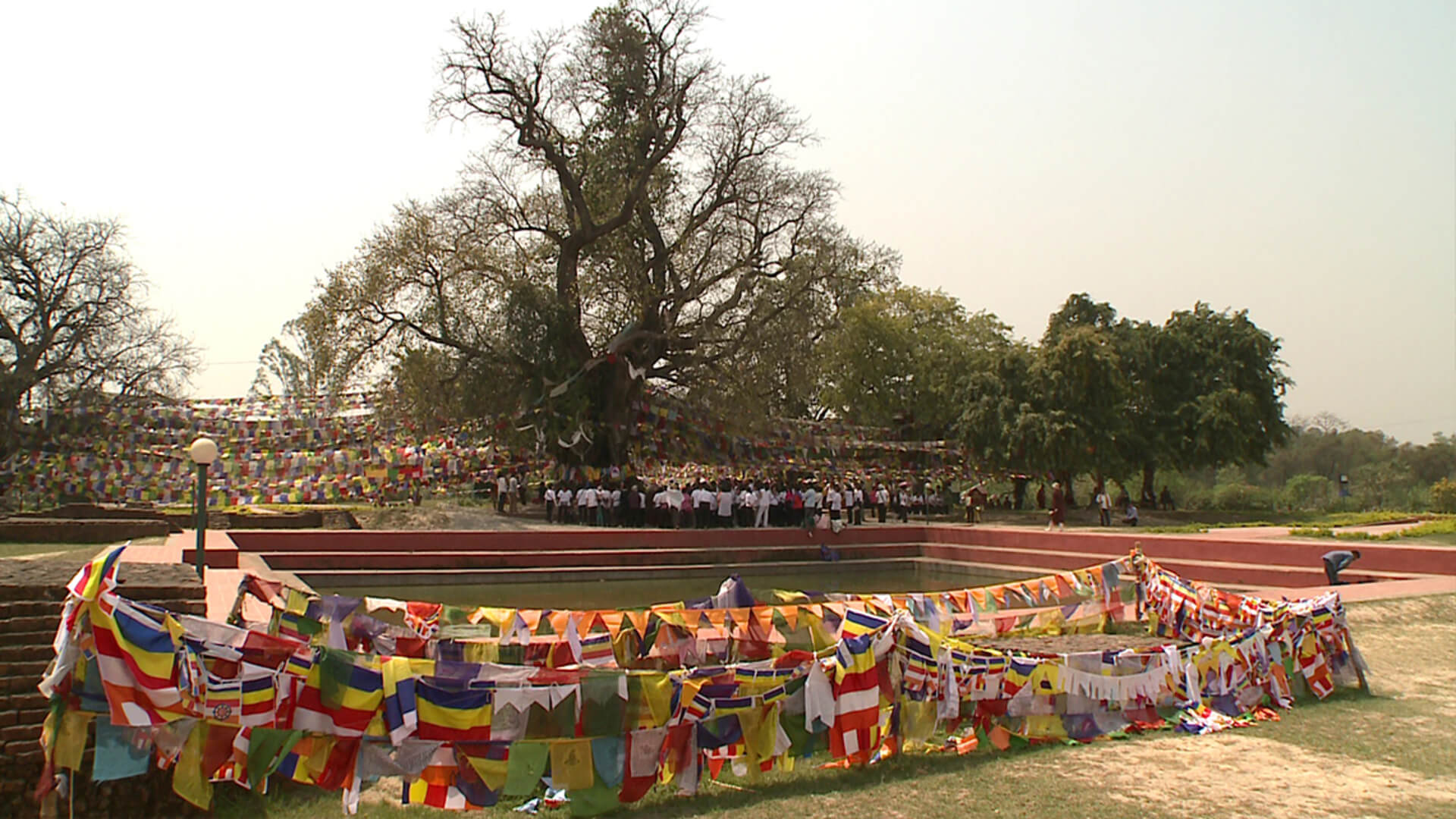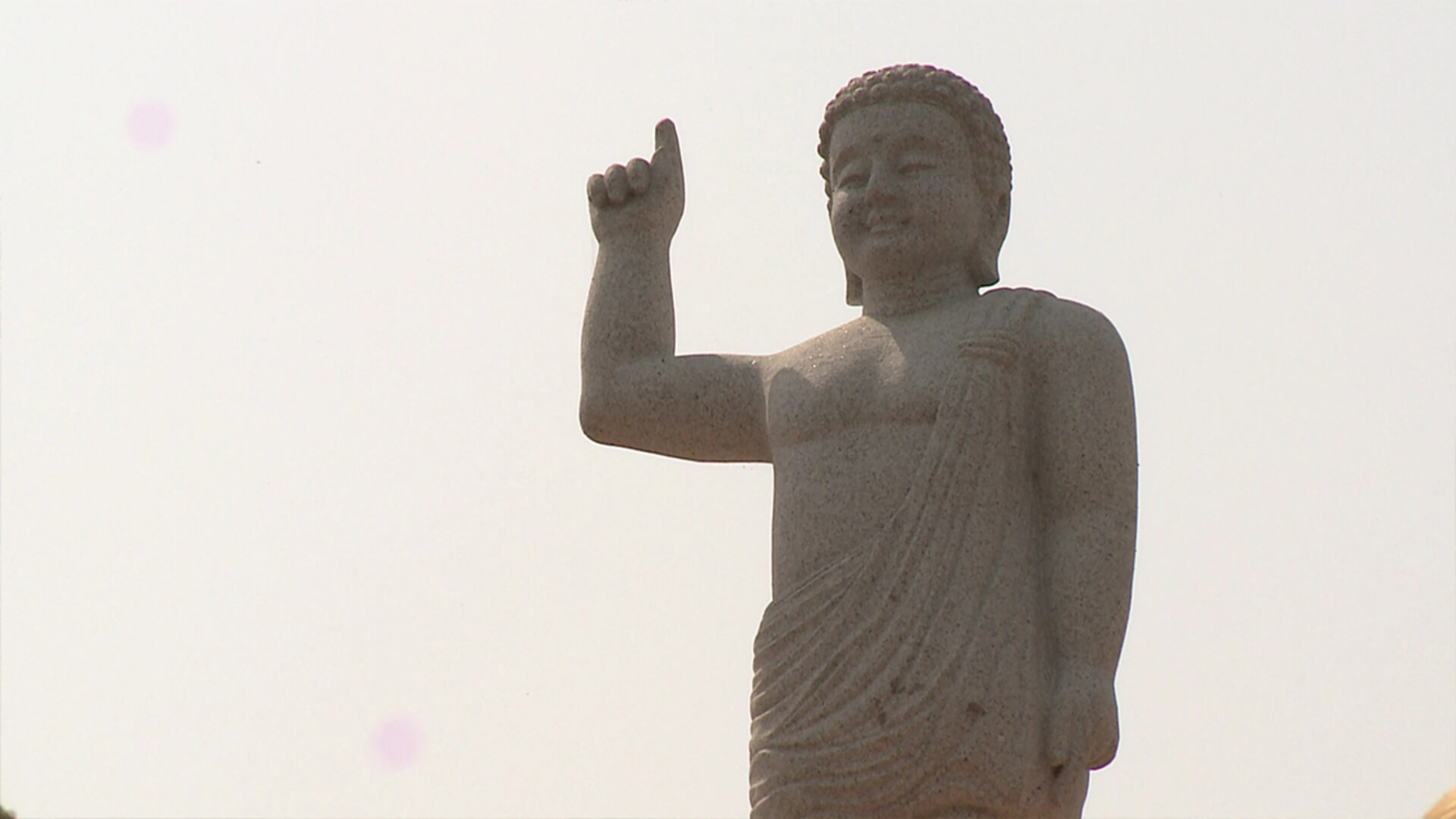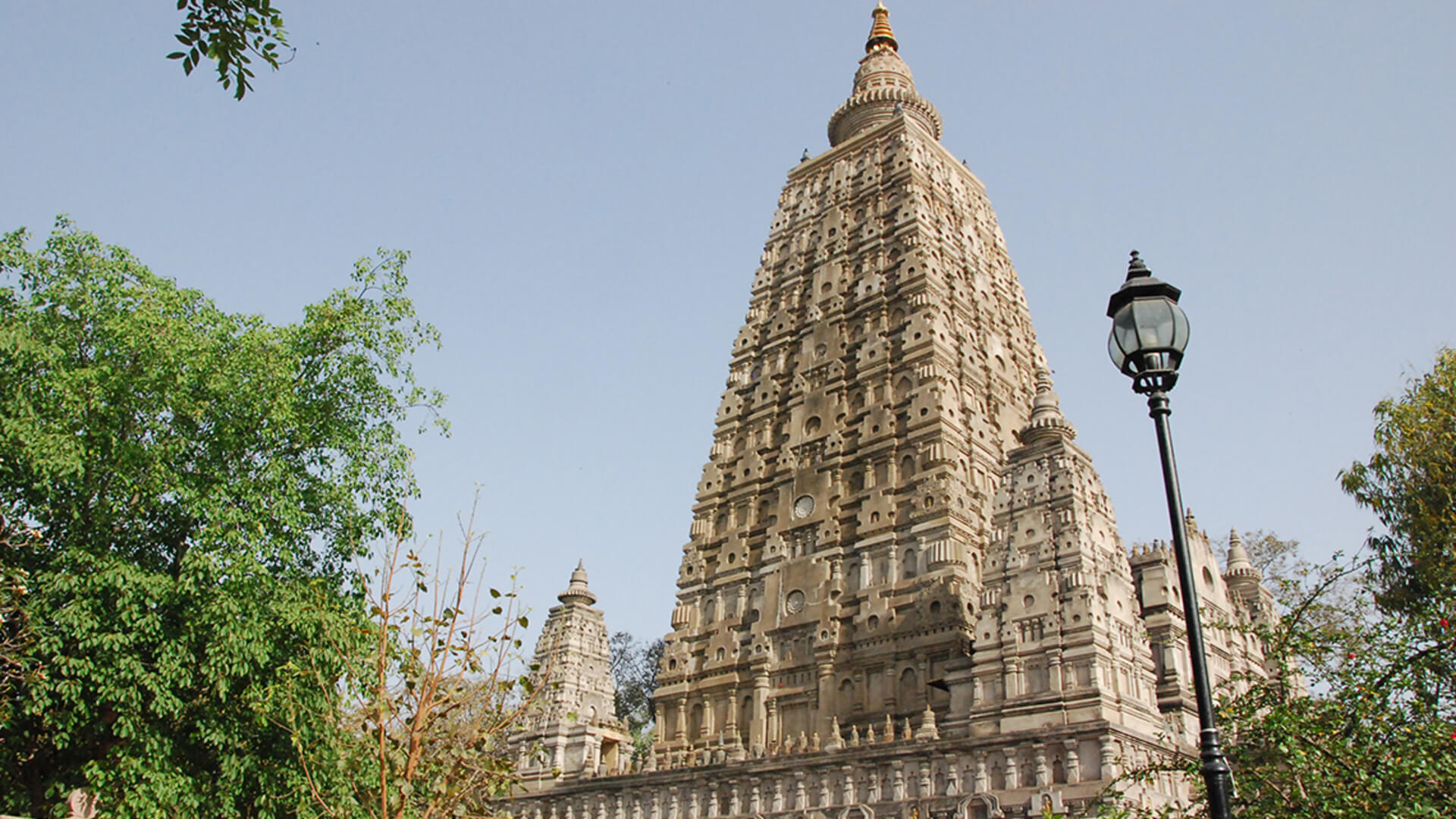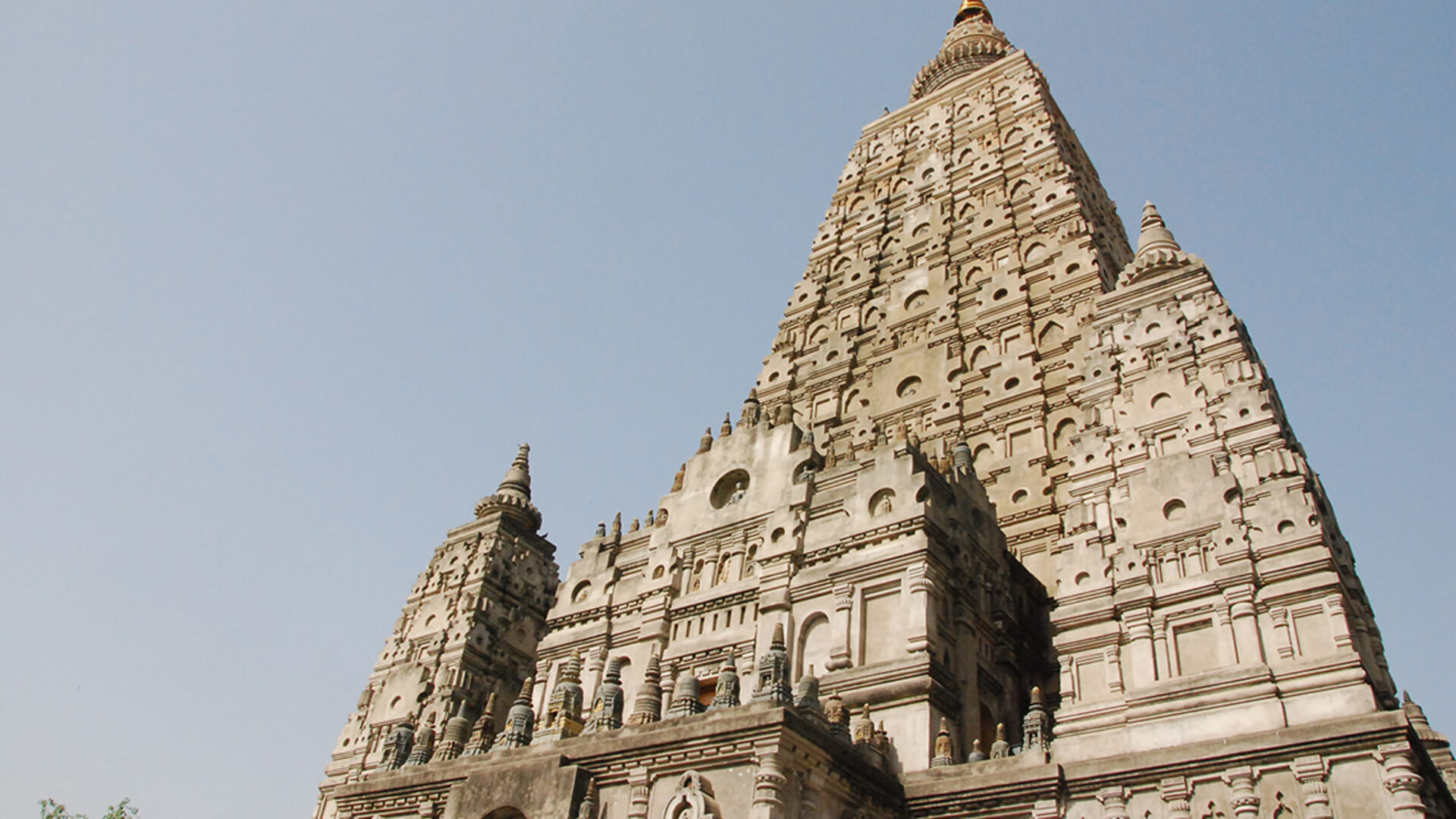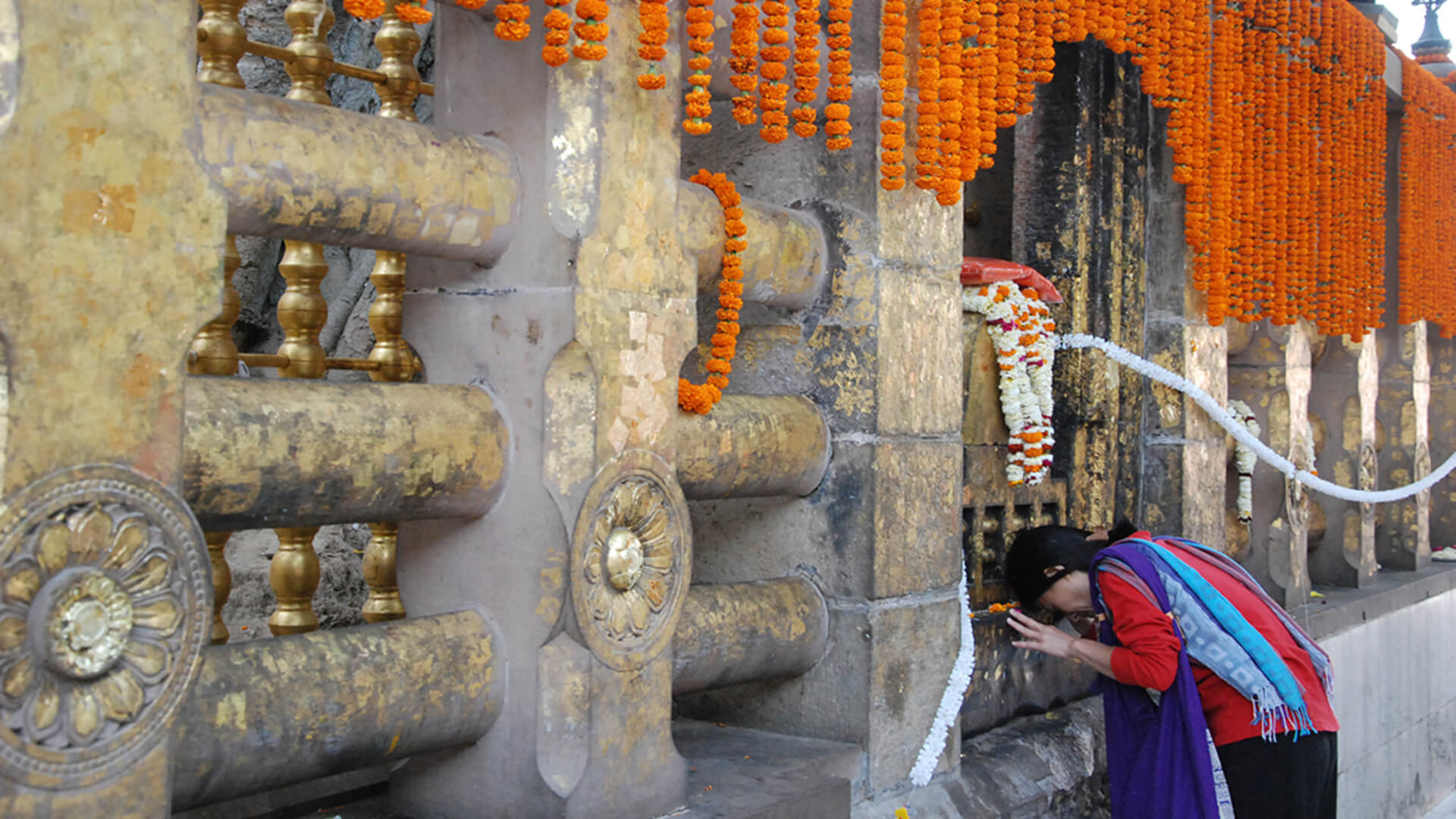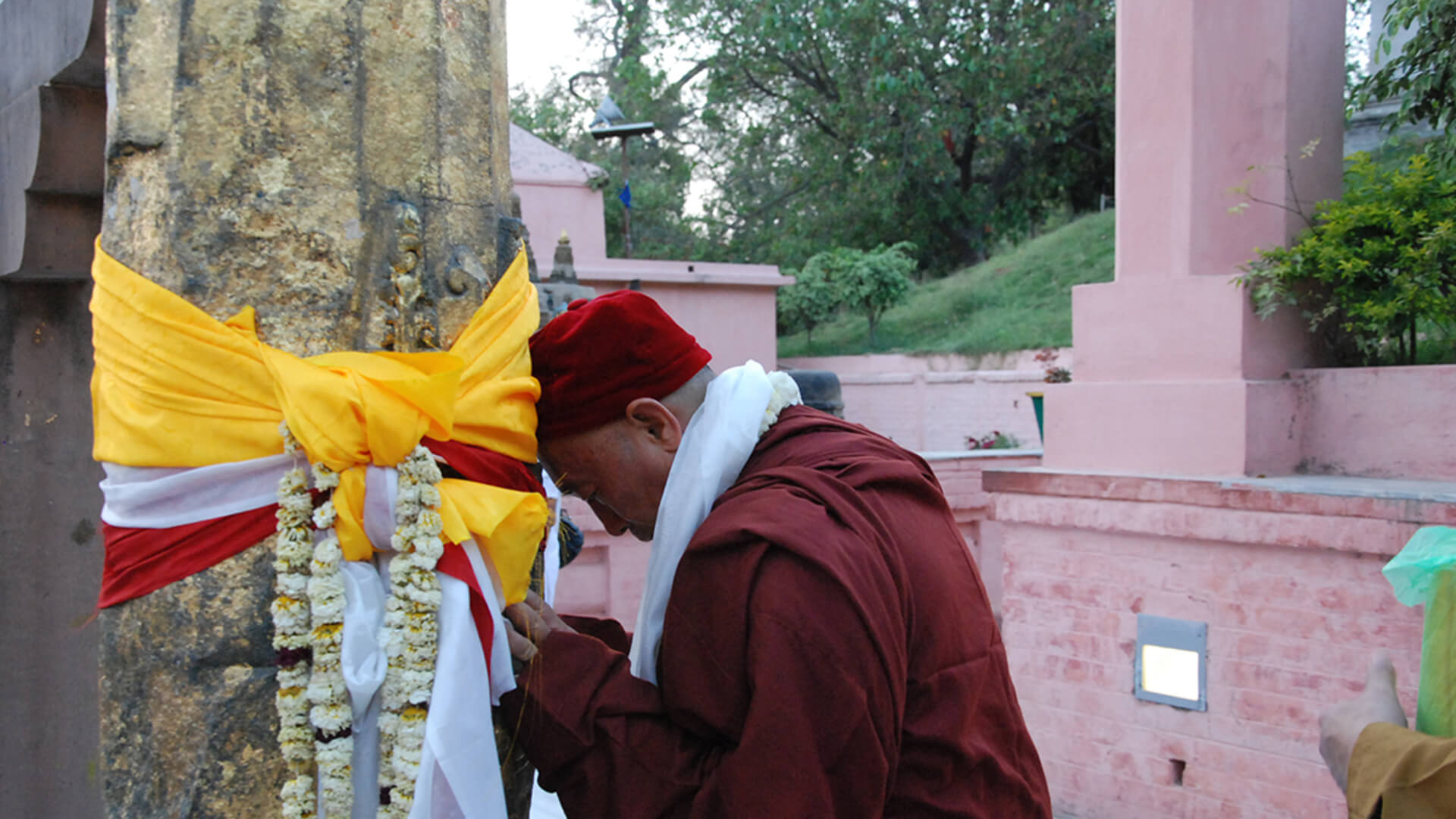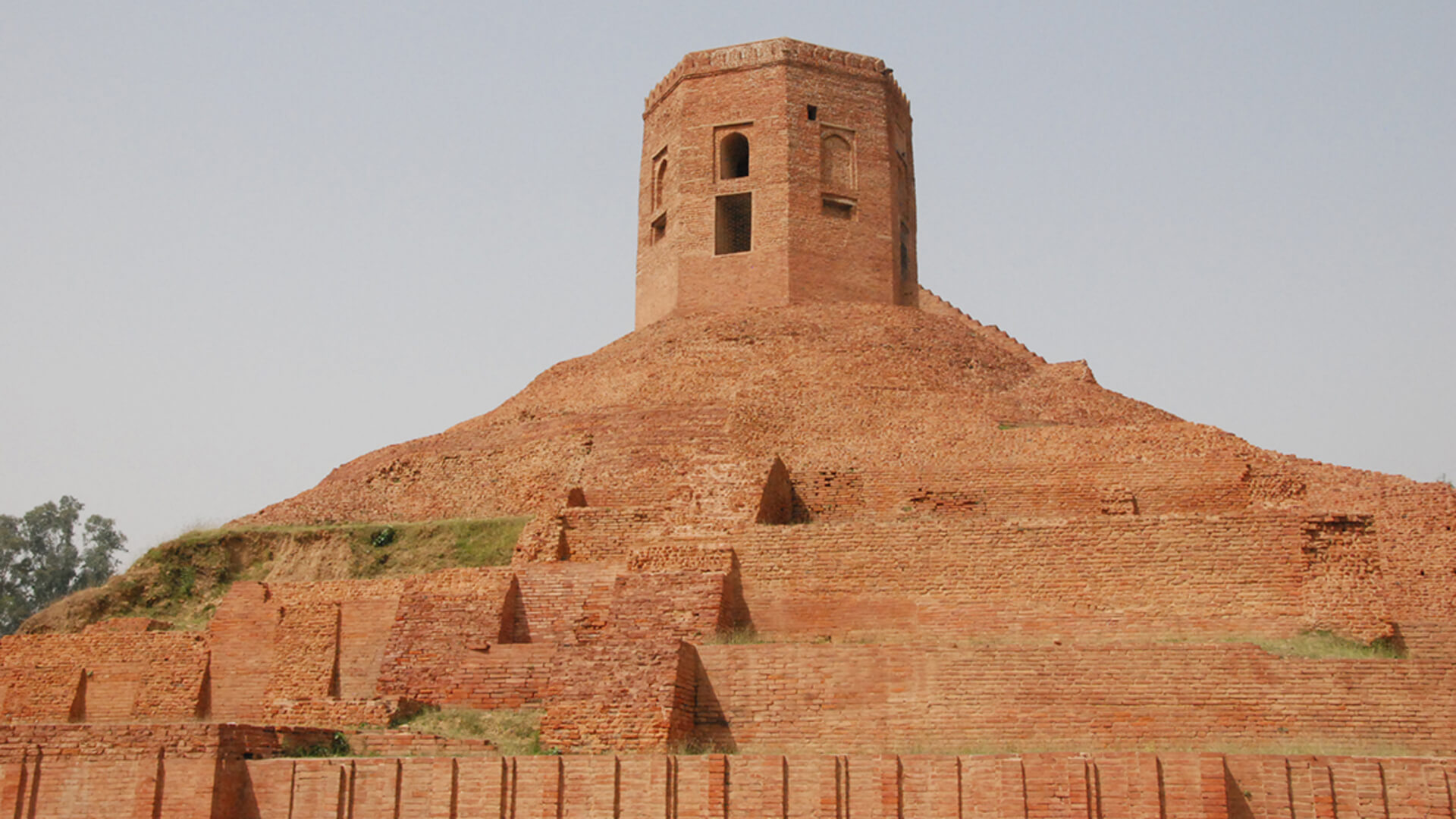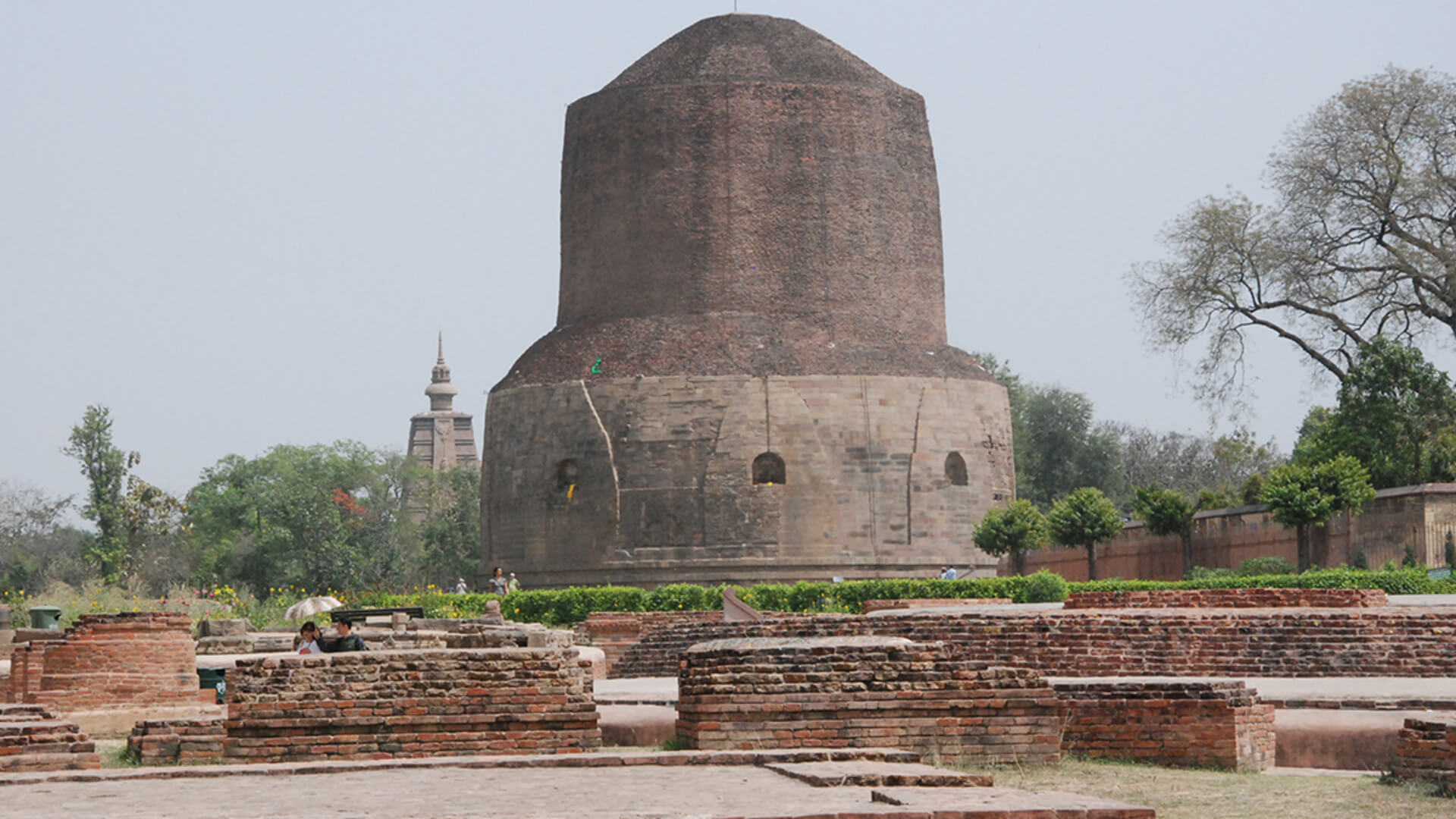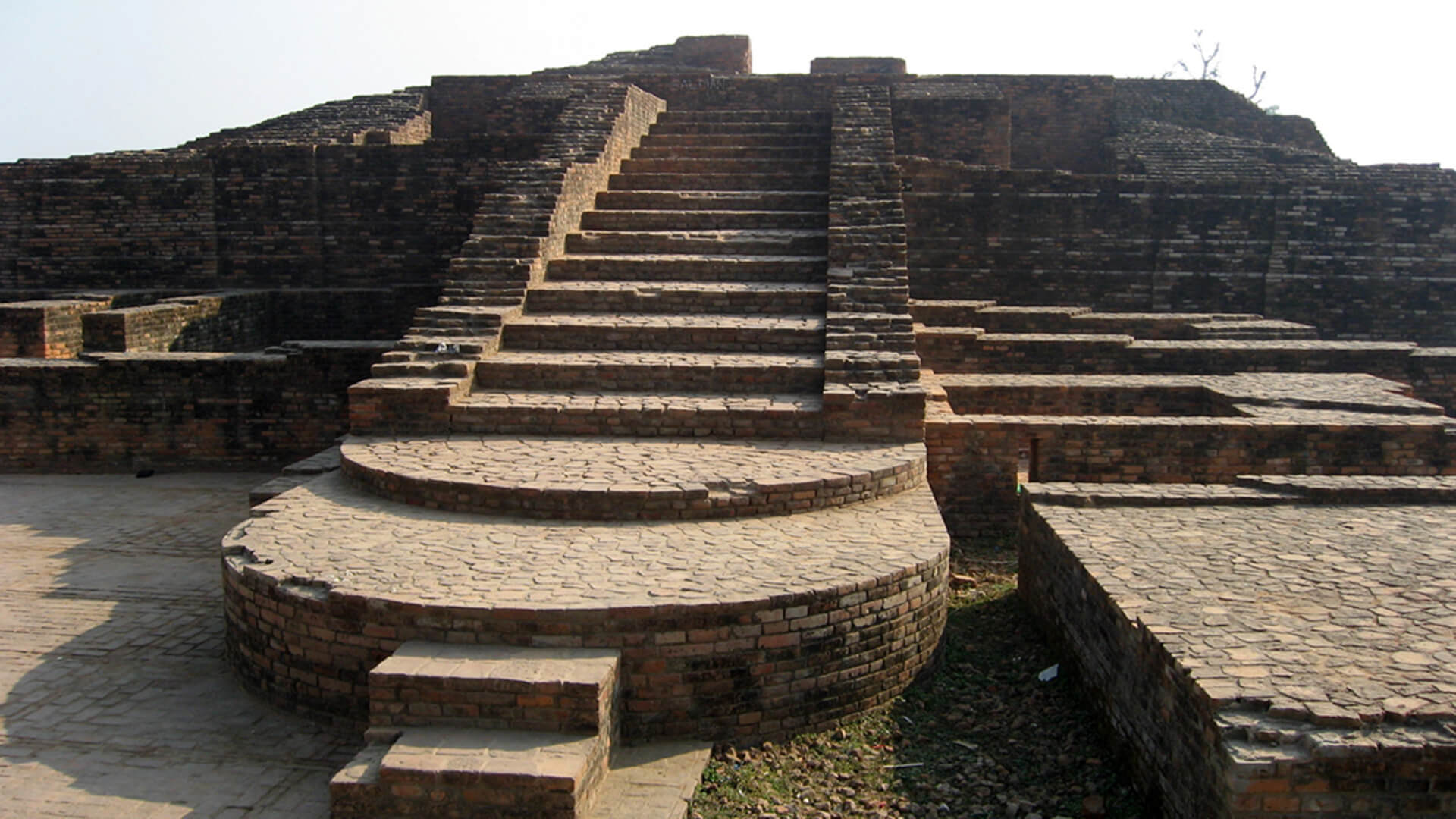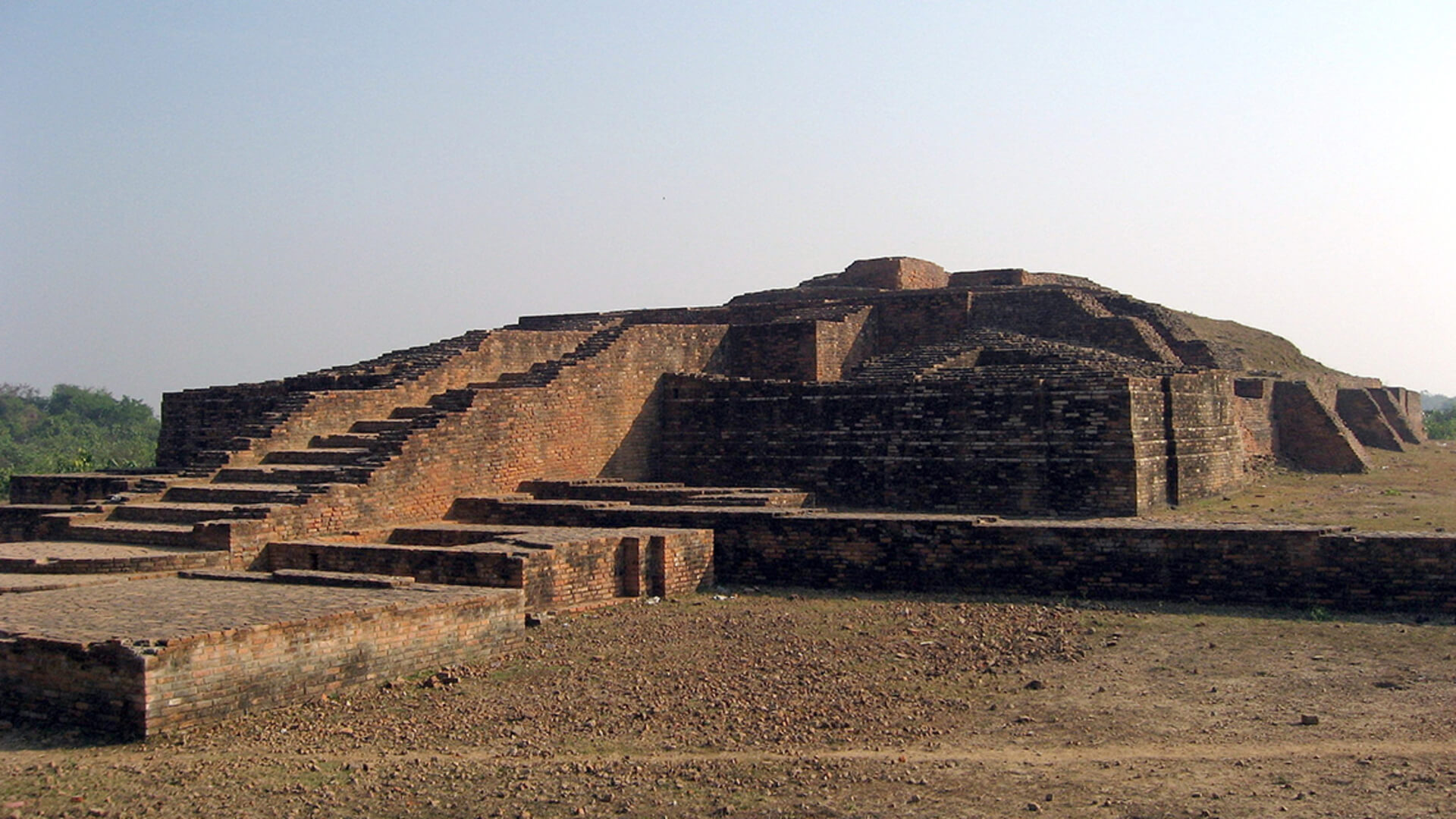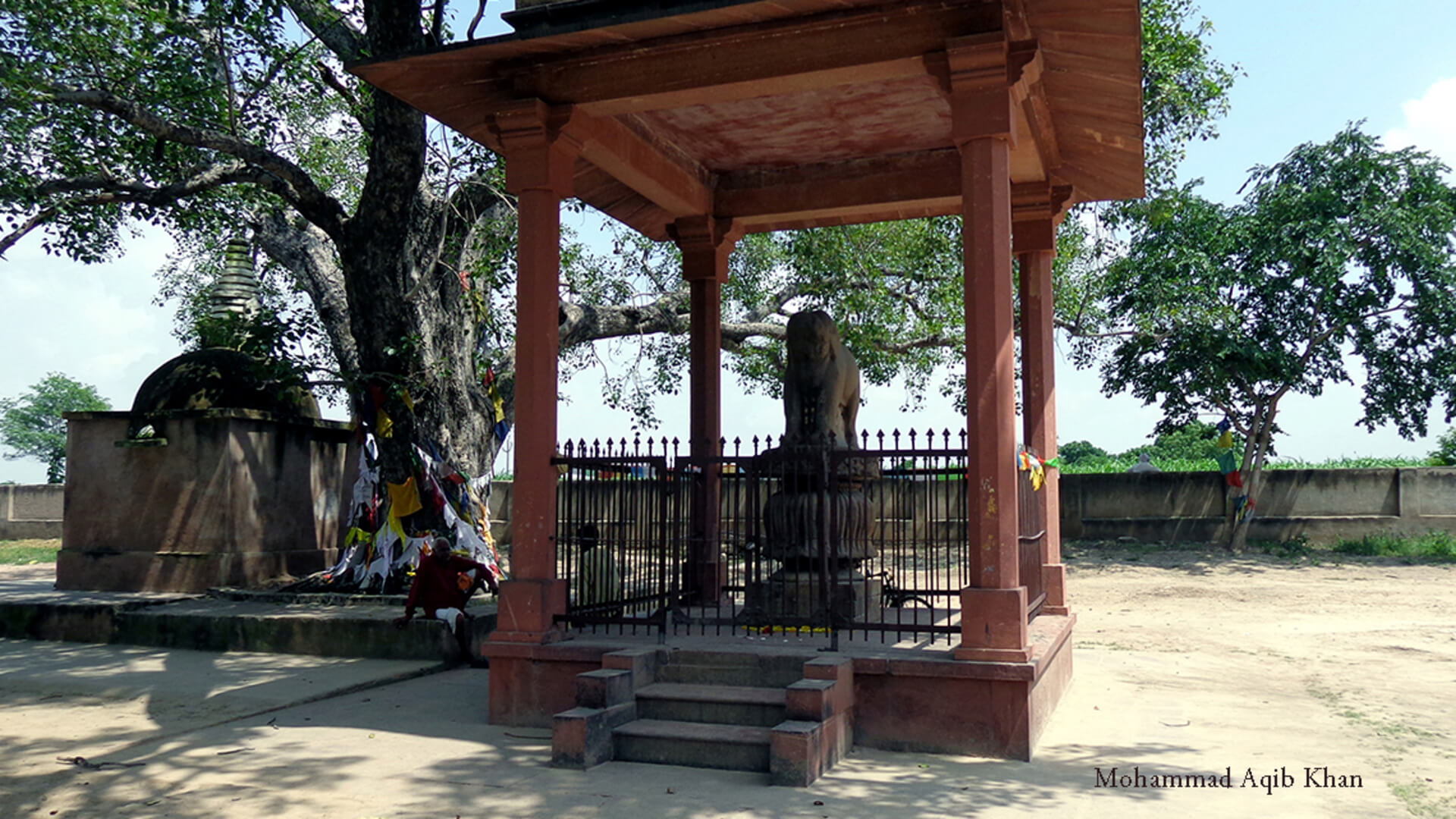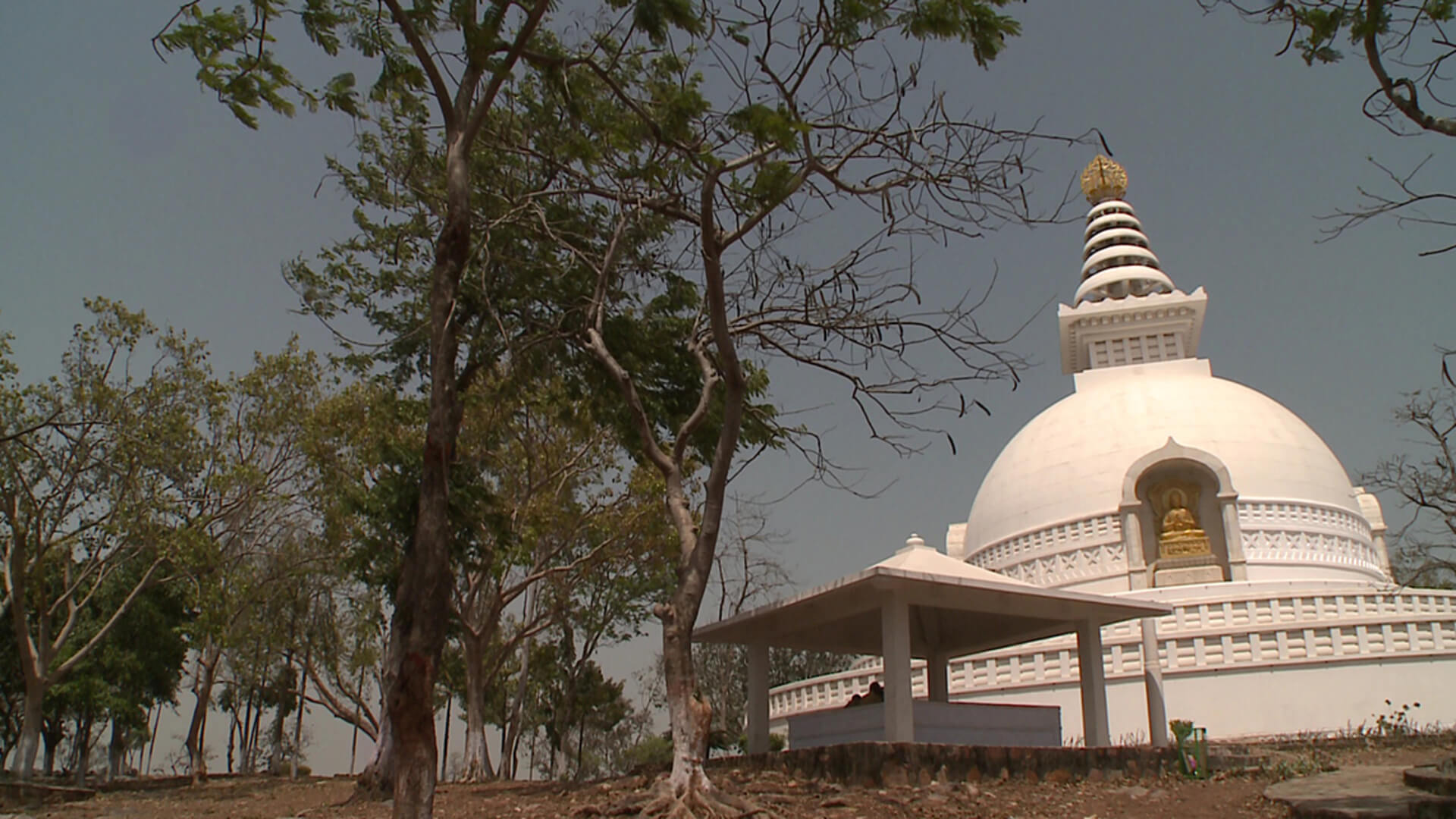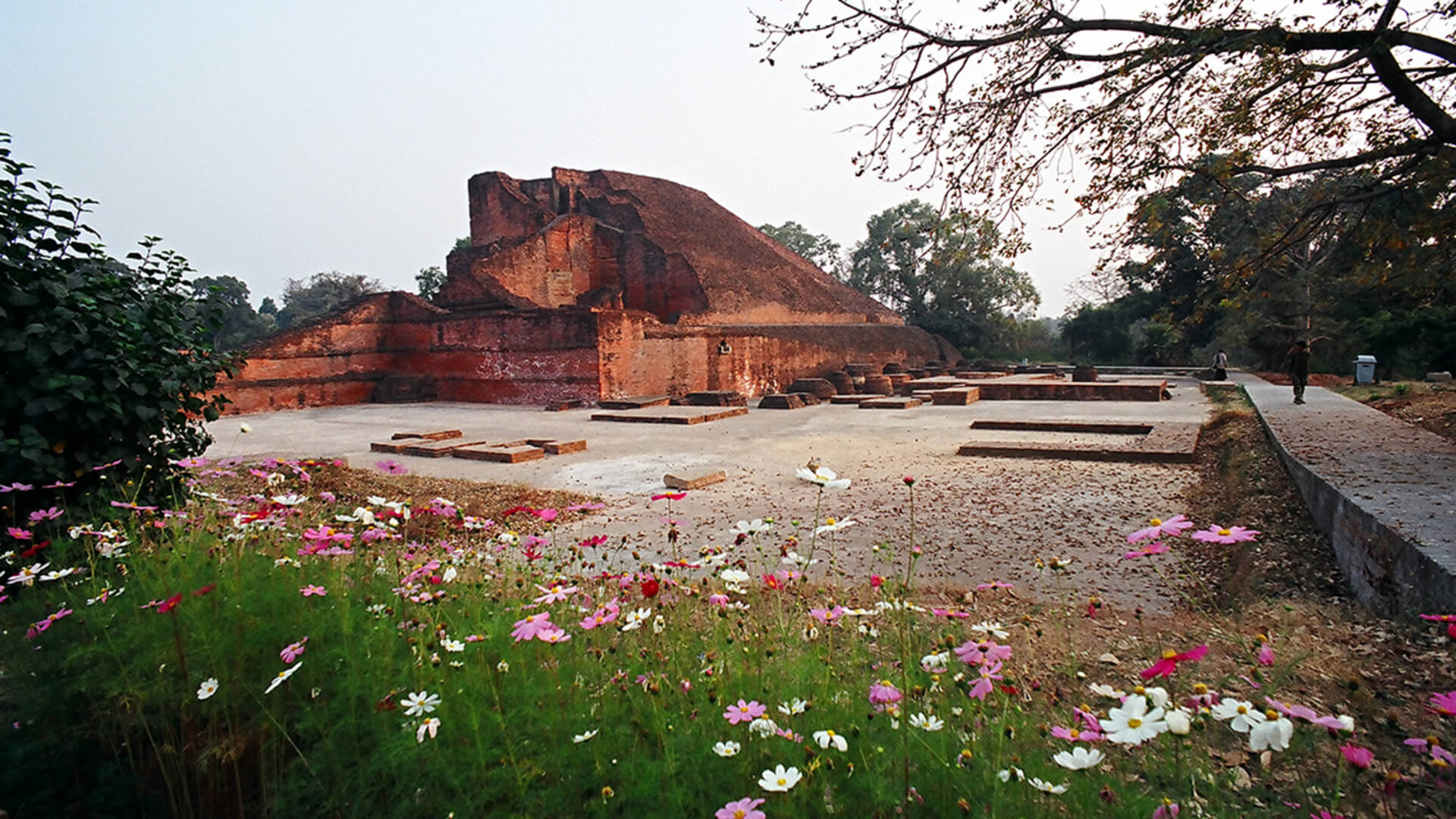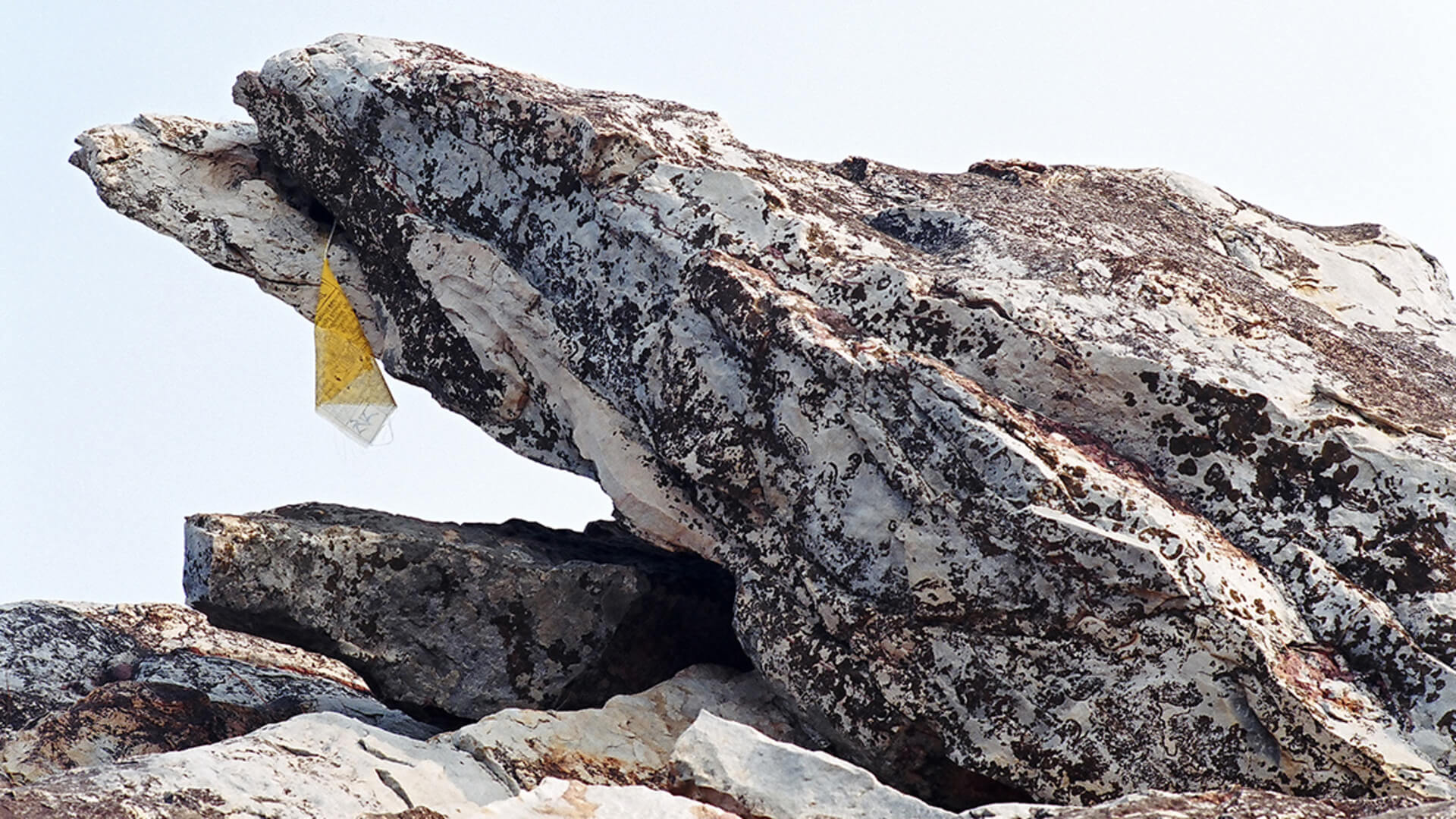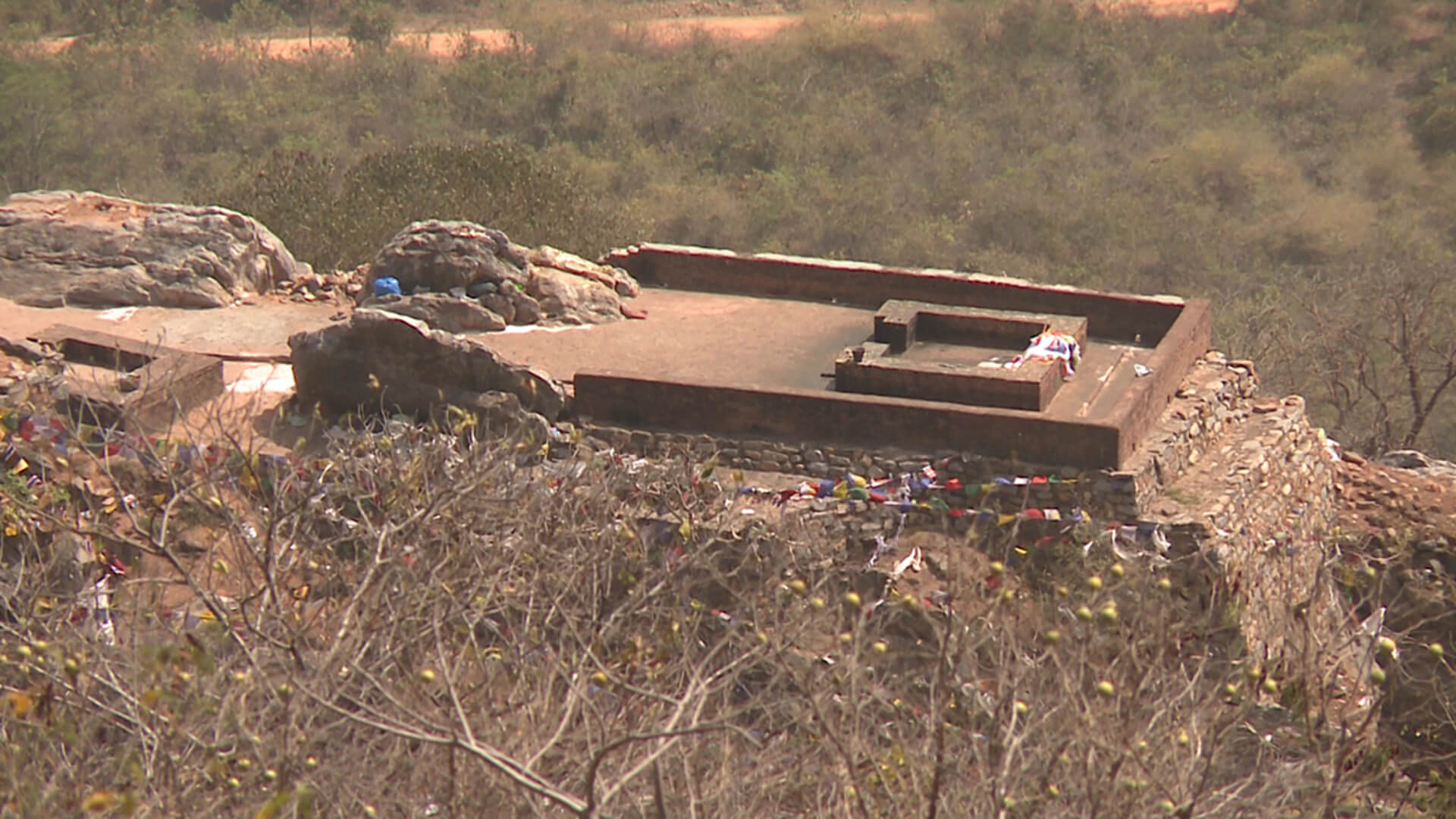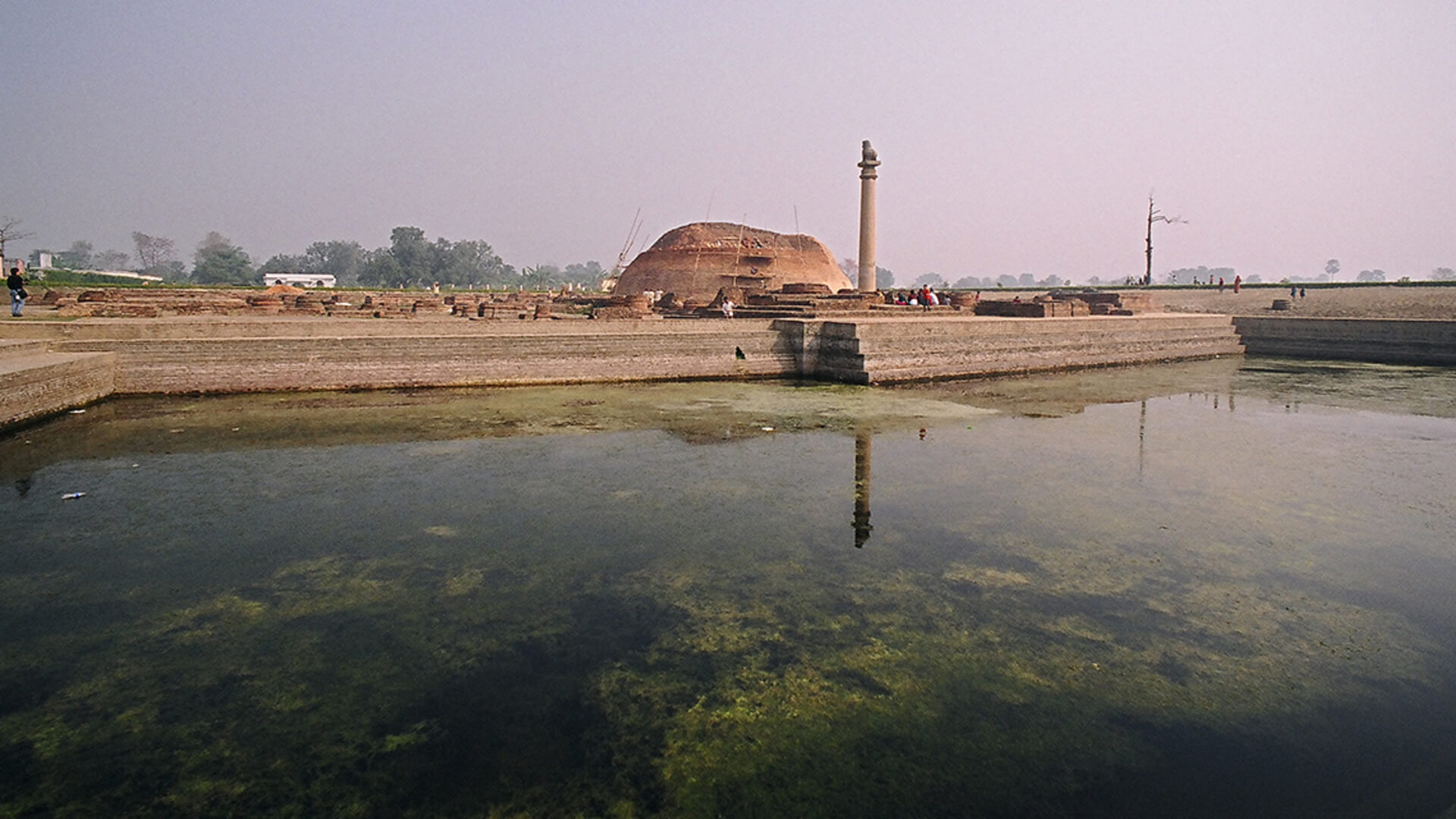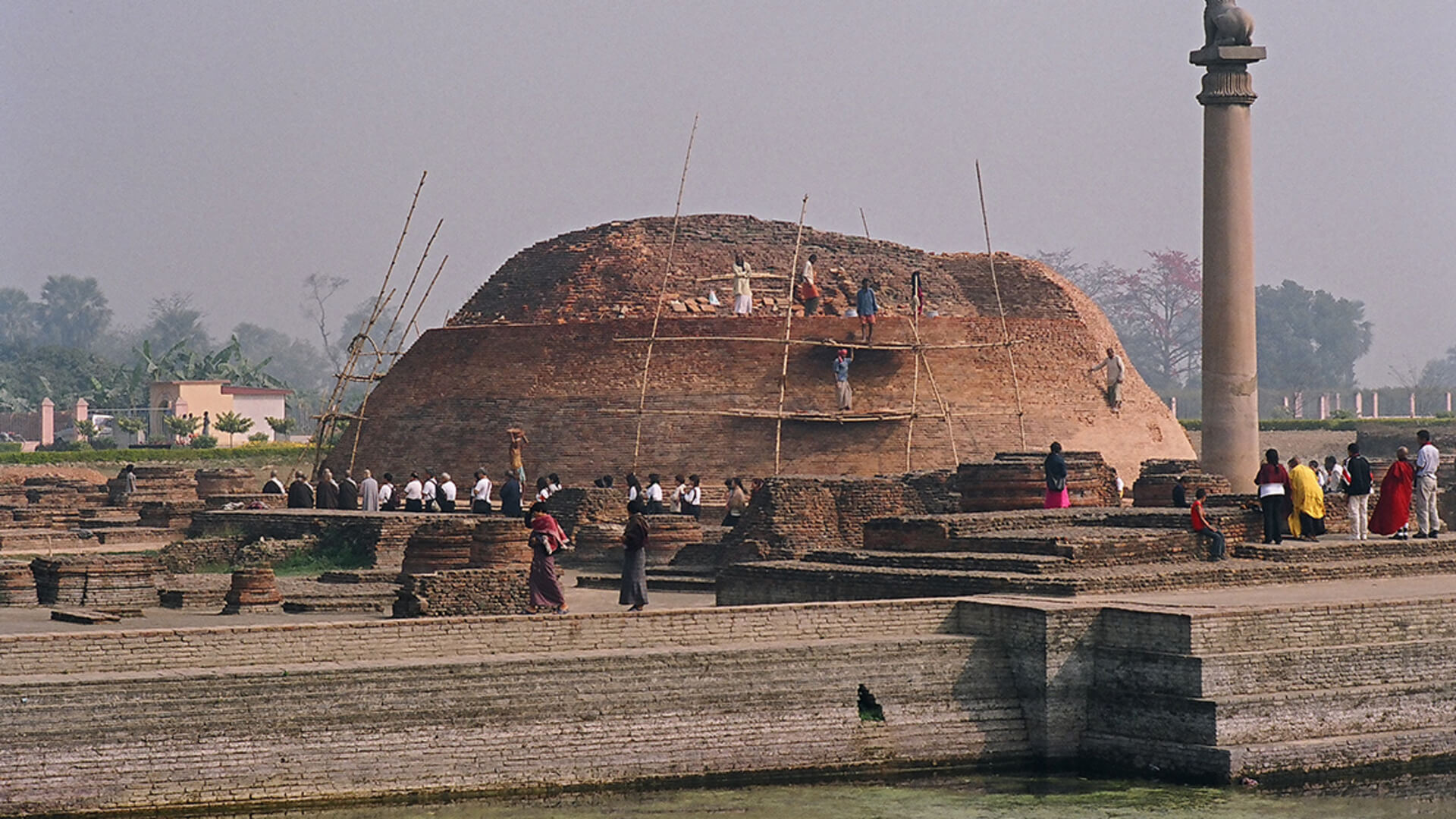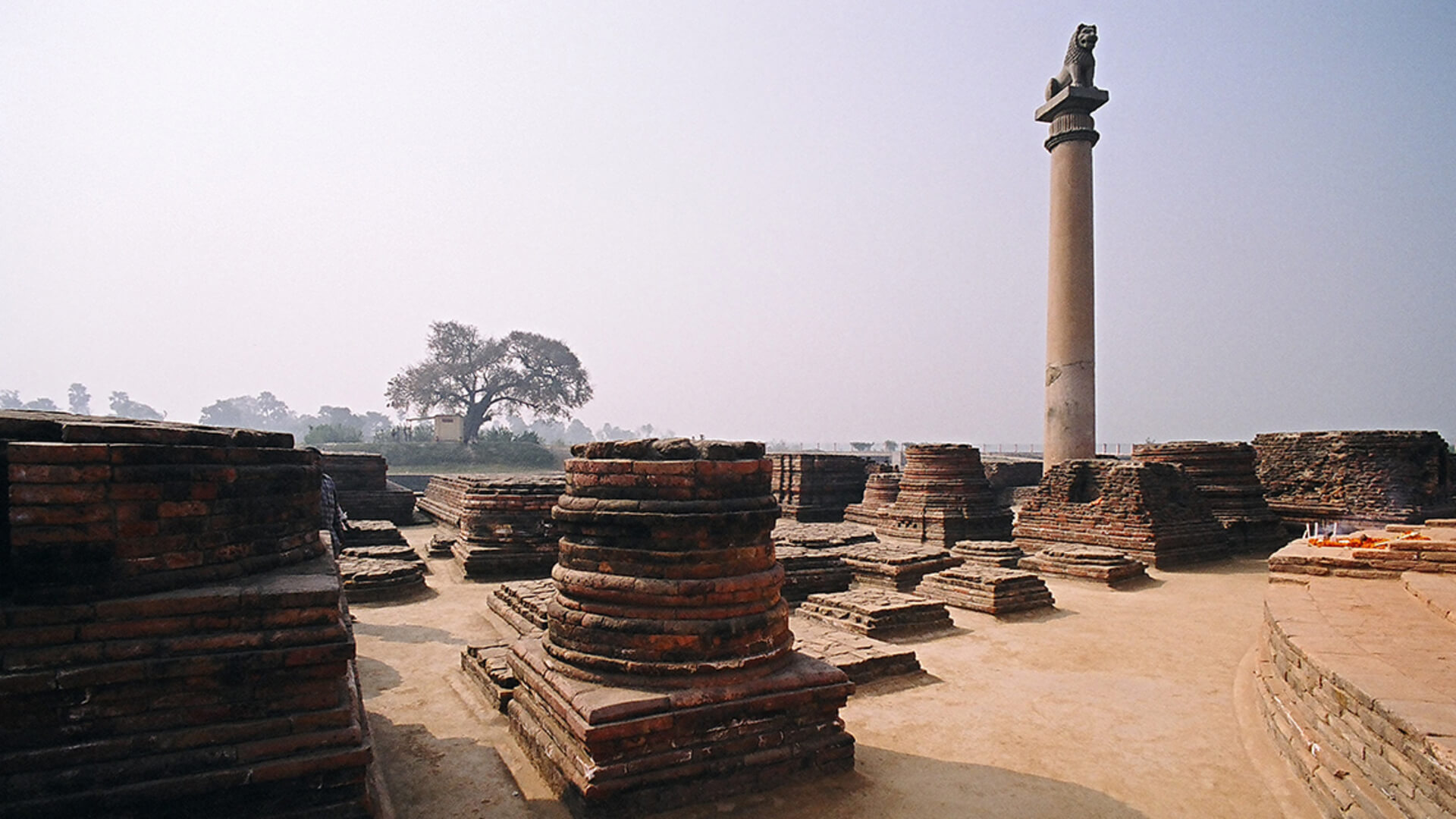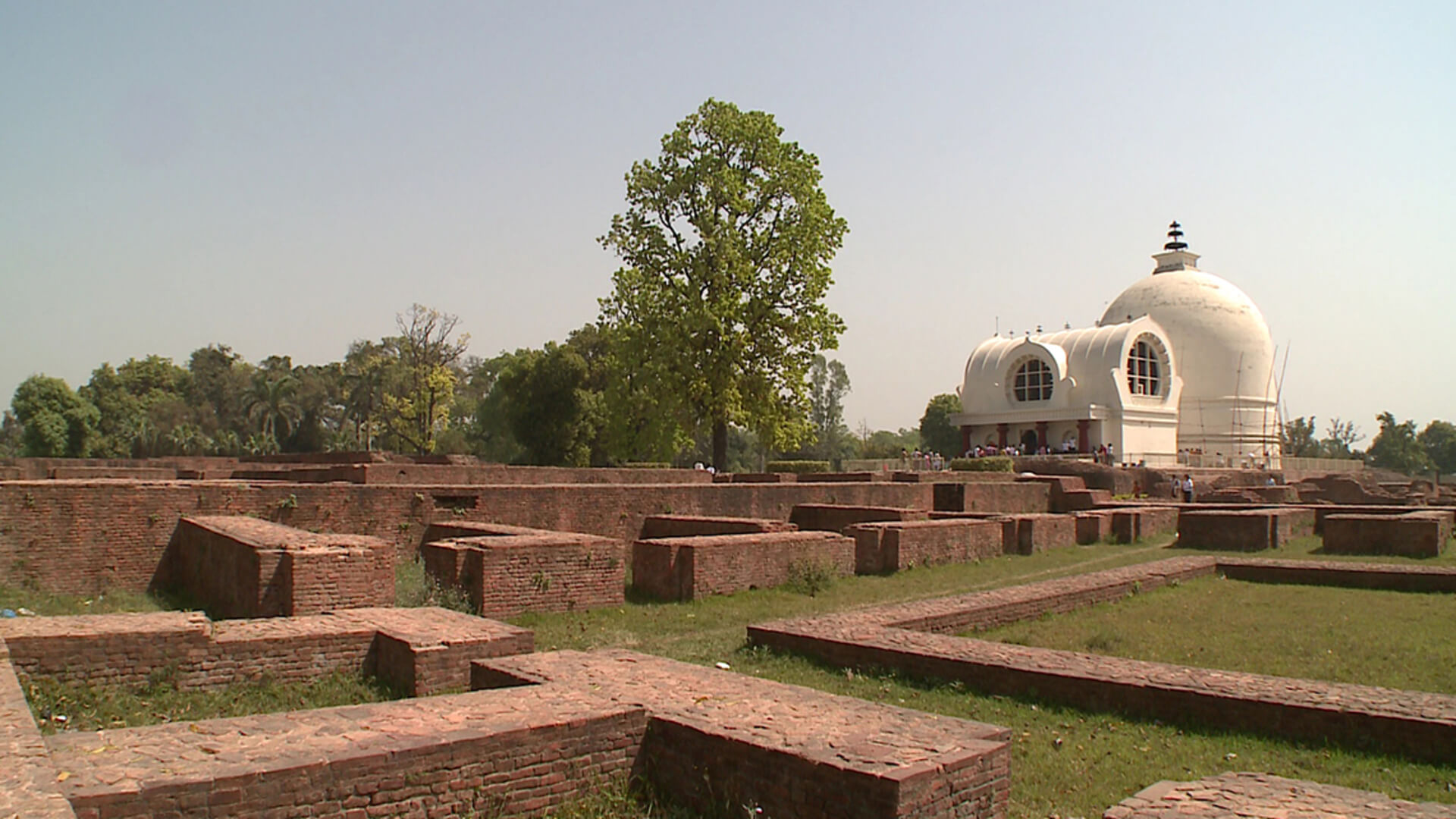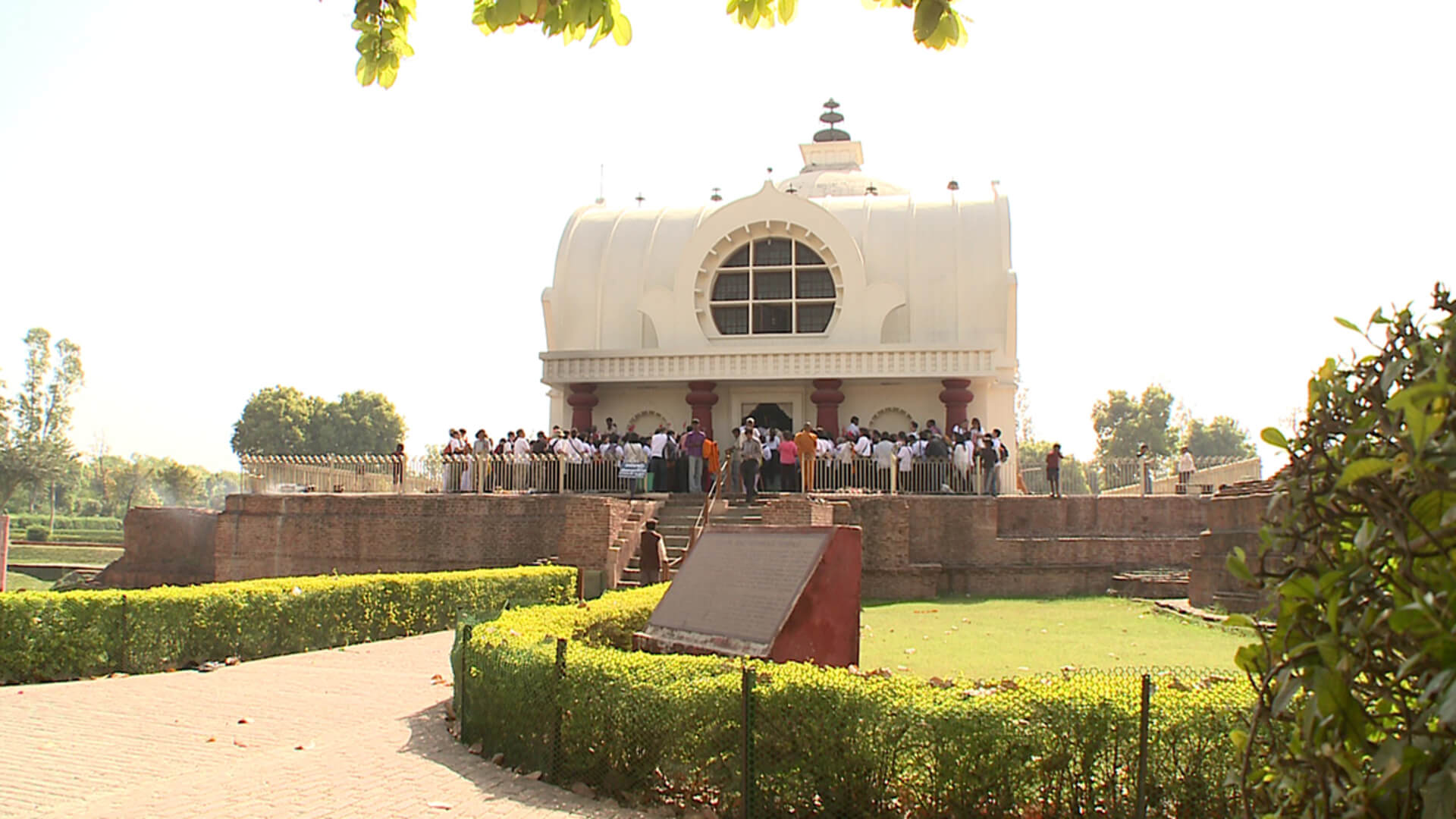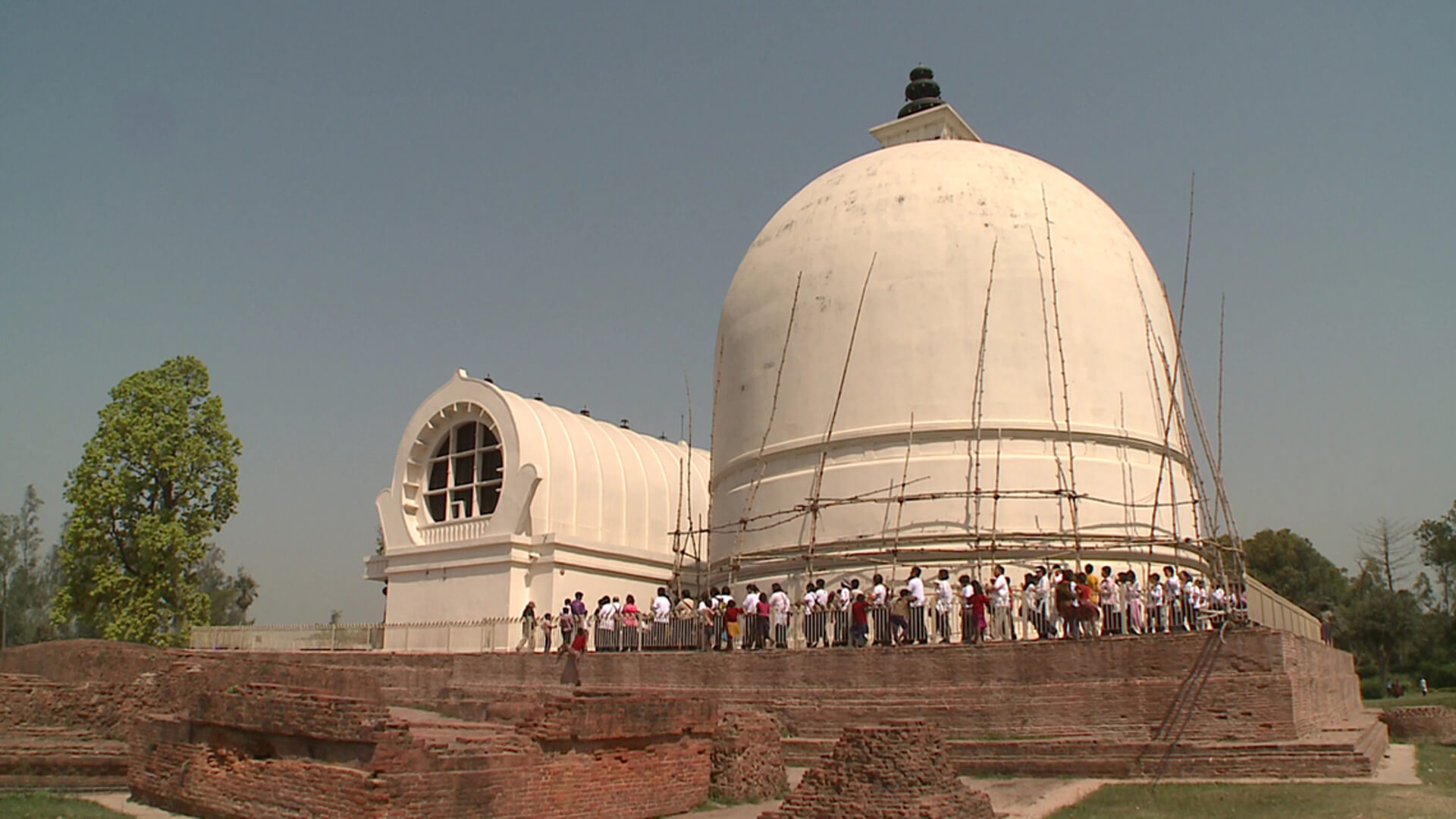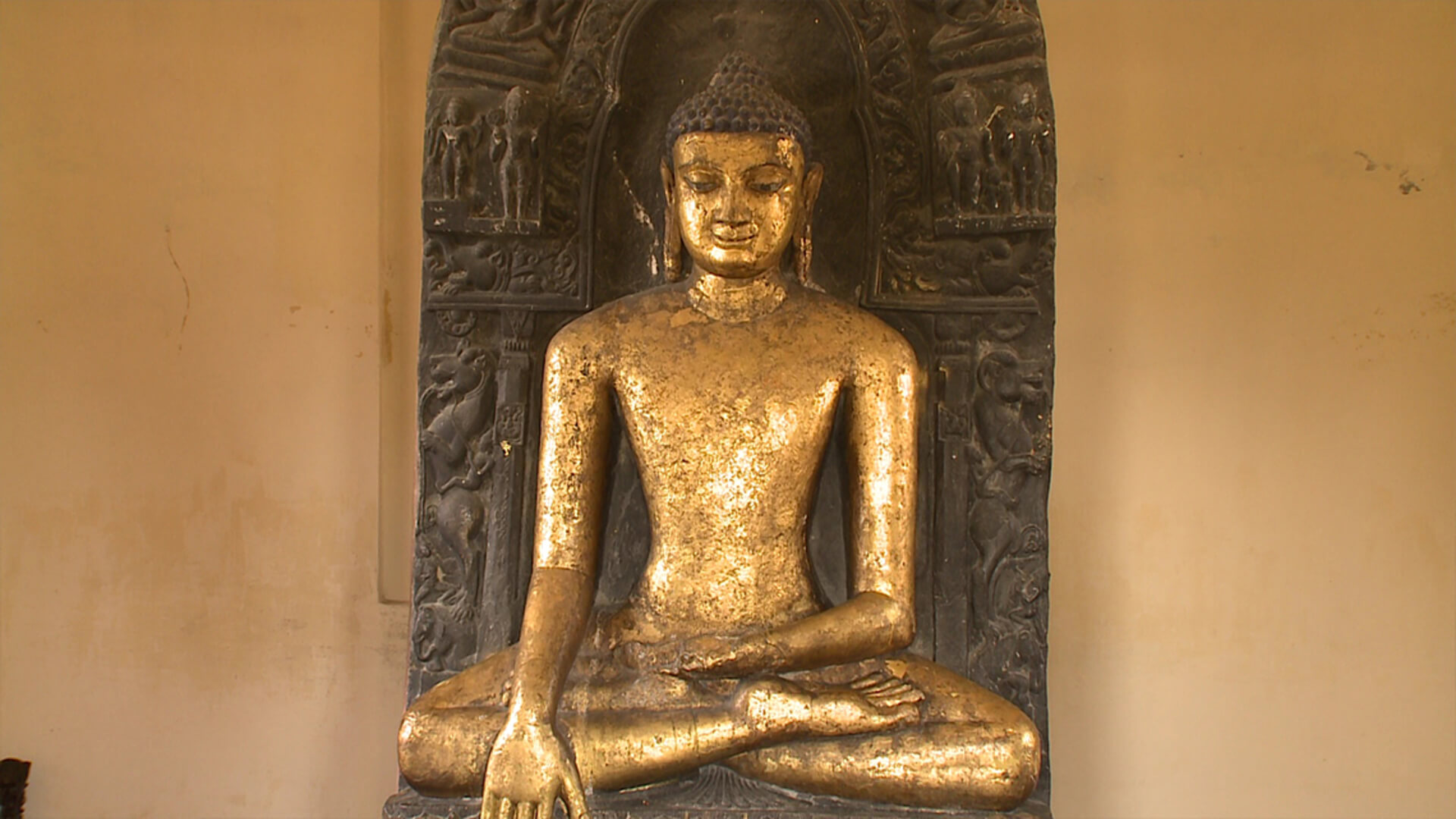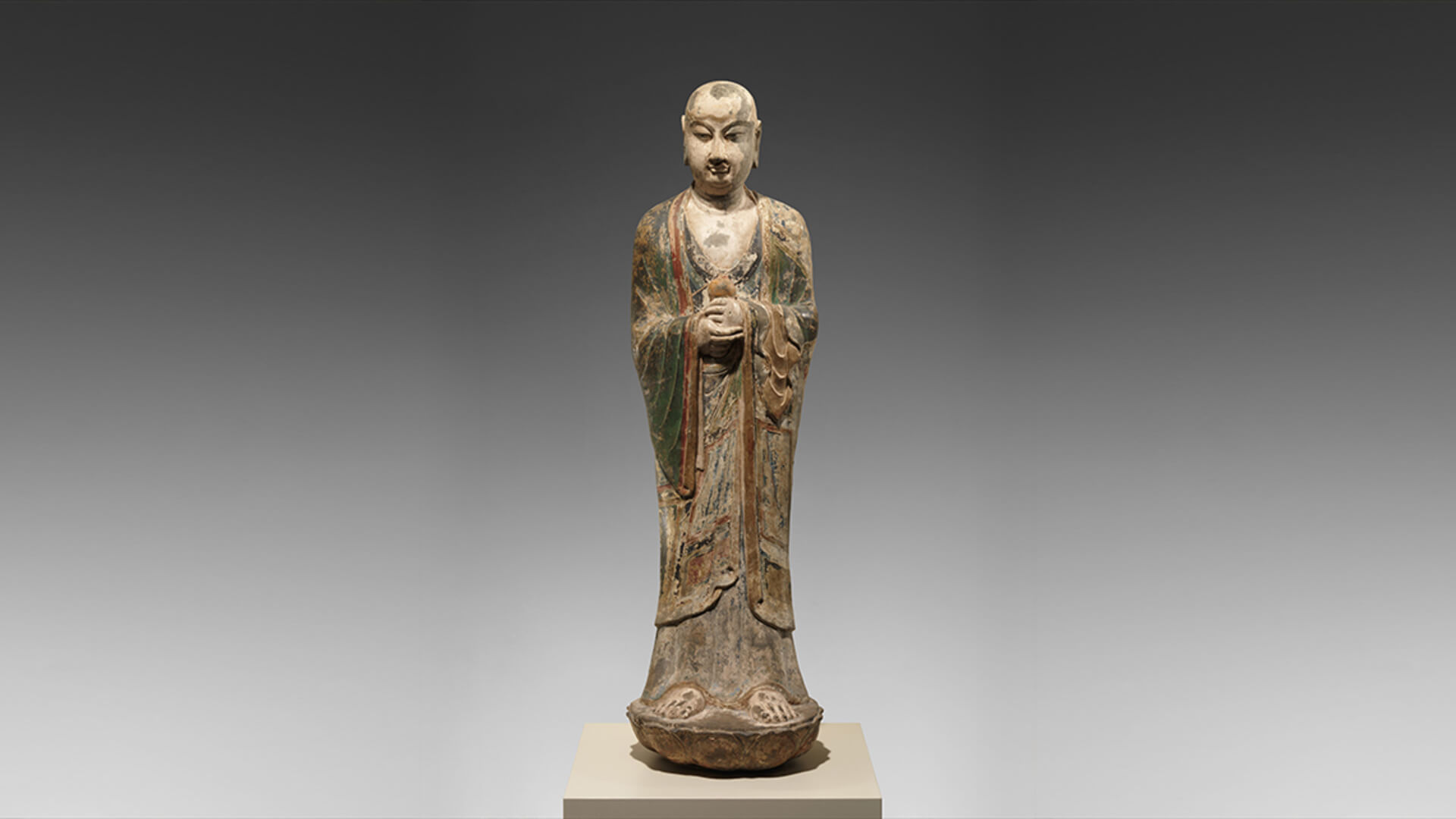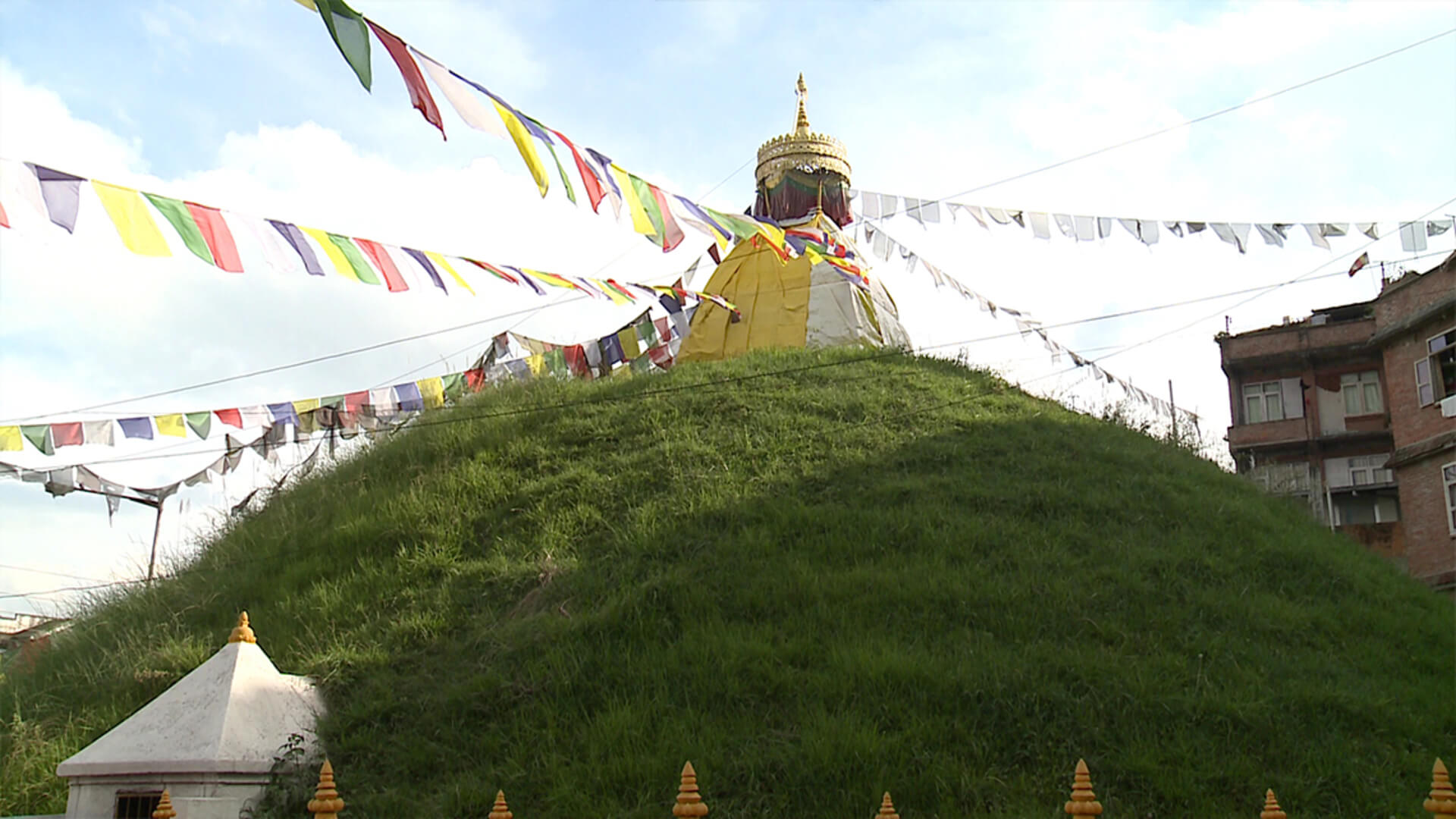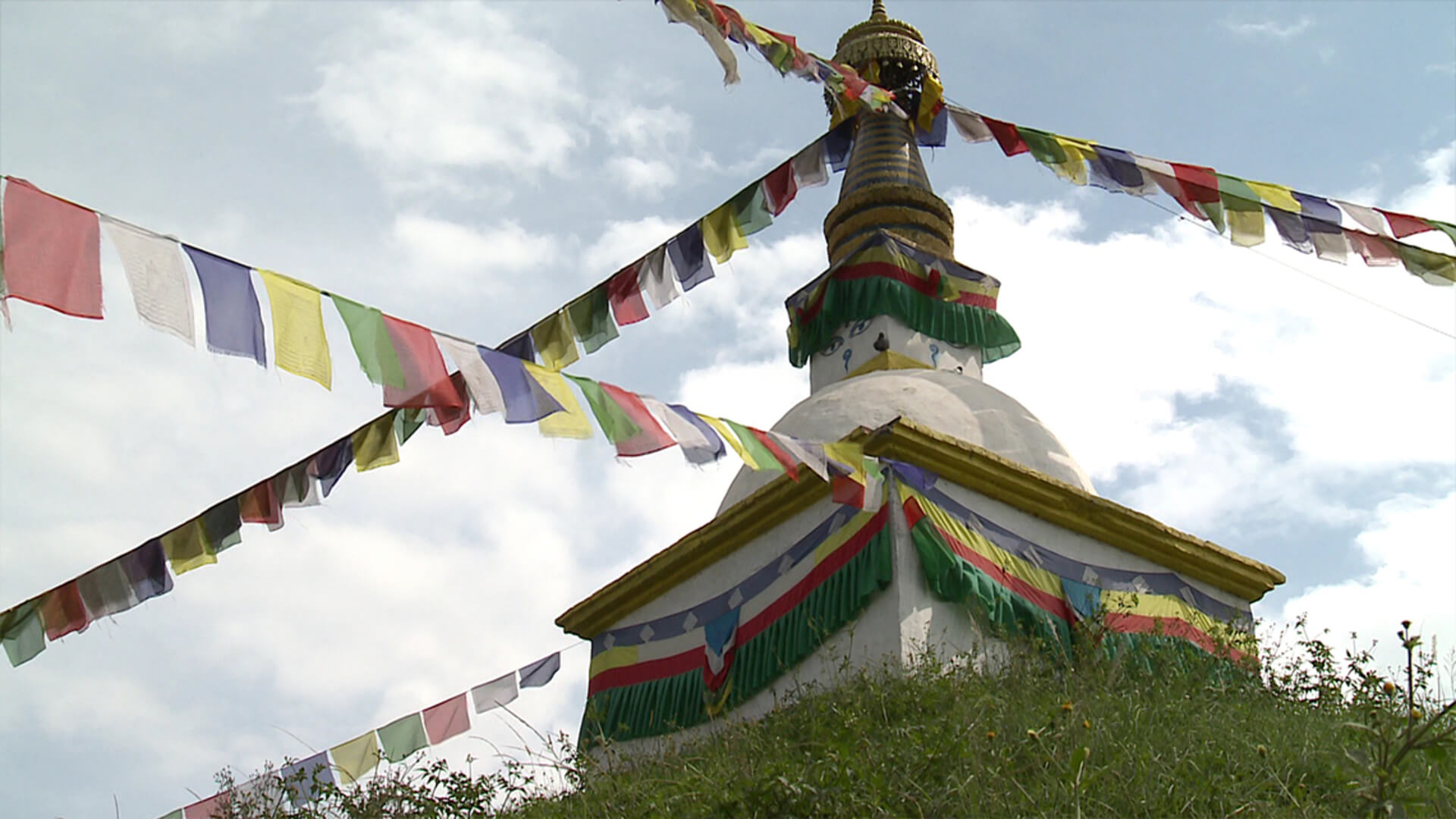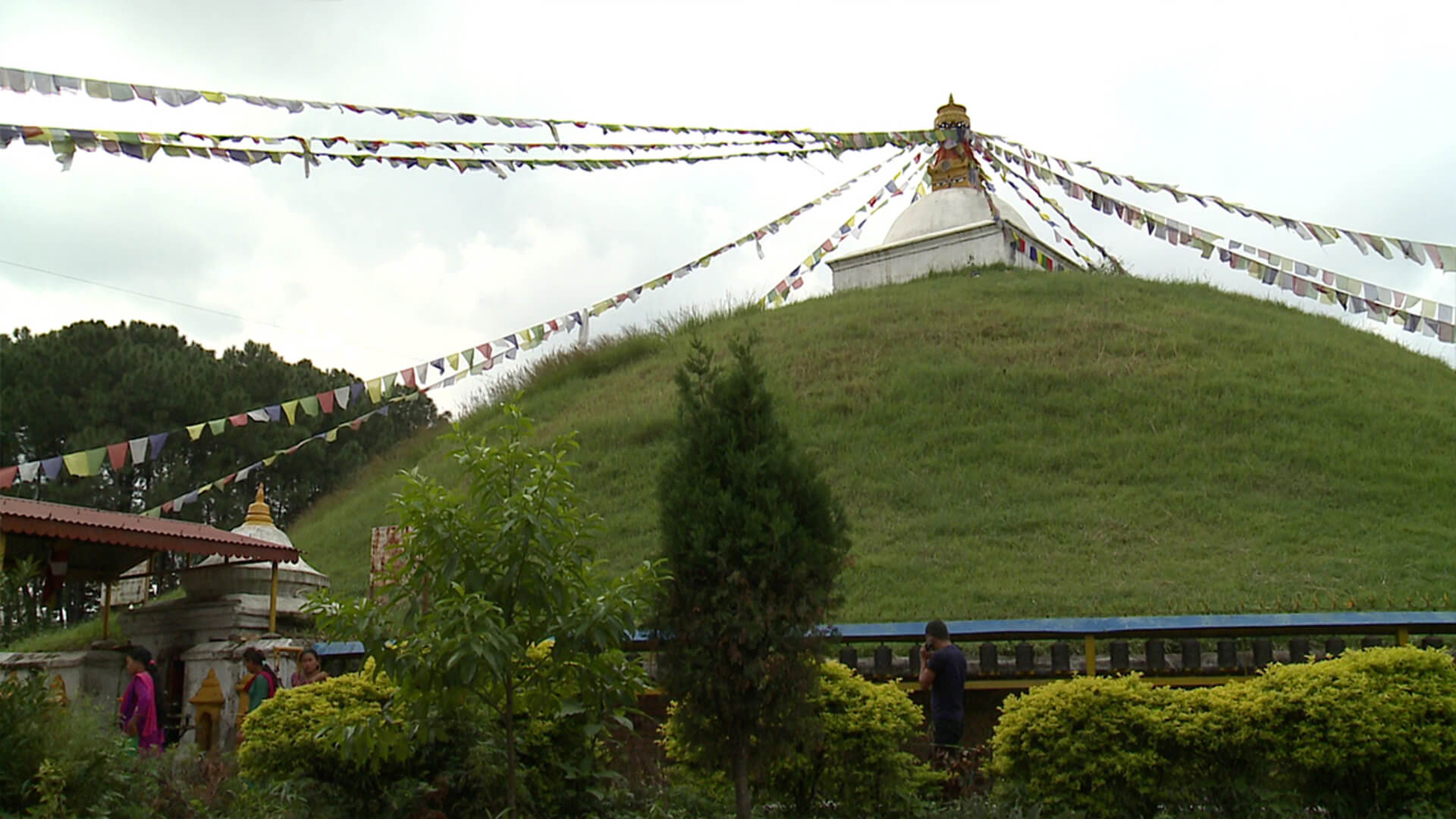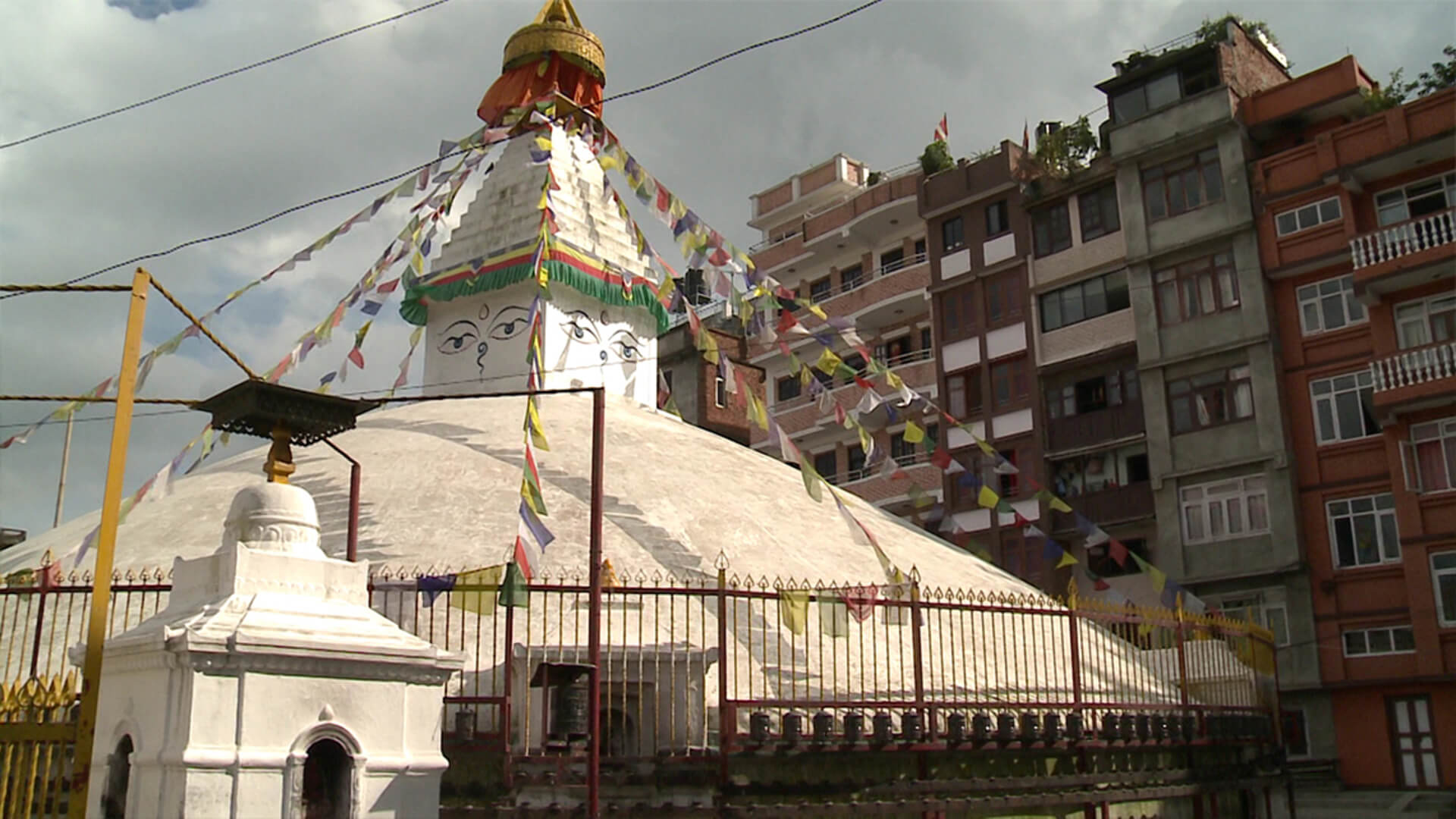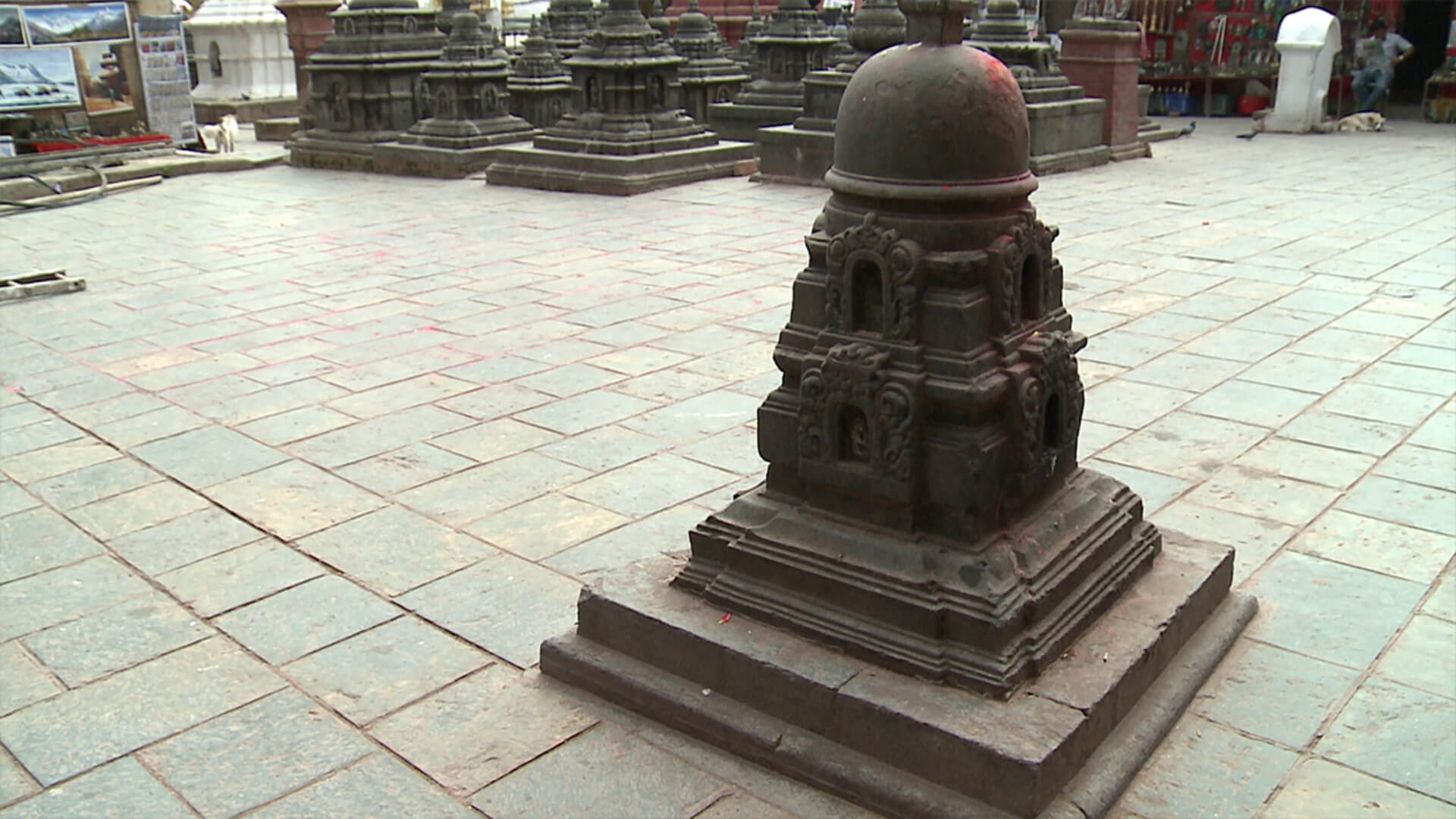Located to the north of India, Nepal was under Indian rule more than two-and-a-half millennia ago at the time when the Buddha (given name Siddhartha Gautama as heir to the throne of a small country, later called Shakyamuni Buddha) was born in Lumbini in modern-day Nepal. The Buddha attained enlightenment at 31 and shared his teachings for 49 years in northern India including Nepal. Buddhism, therefore, reached Nepal early on already during the time of the Buddha himself.
According to archeology professor Sukra Sagar Shrestha, Ananda as the Buddha’s chief disciple went for a visit in Kathmandu bare-footed and, as legend would have it, suffered blisters on his feet due to the severe cold at the time. When Ananda rejoined the Buddha, so the anecdote, the Buddha praised his disciples for their hard work and allowed that shoes would be allowed hereafter in deep winter, as shoes had been forbidden due to their ascetic practice.
The second golden era of Buddhism after its introduction to Nepal was during the reign of Emperor Ashoka. He personally visited Nepal to spread Buddhism and his daughter came along, who later got married in Kathmandu. Emperor Ashoka, therefore, ordered that 5 stupas be built for the old city of Kathmandu - Patan - with one each for the four directions and one in the center. People would come circle around the stupas slowly clockwise in worship, when it’s time for fasting and festivities. Most popular of all is the celebrations of the ending of the Vassa (summer retreat) in lunar July - a three-month retreat overlapping with the rainy season - when crowds gather around the stupas to say prayers and make donations for provisions to support the monastics.
Episode 1: Prelude - Origin of the 108 Lokesvaras
Episode 2: Dharma lost to the world
Episode 3: The Origin of Buddhism in Nepal
Episode 4: The Origin of the 108 Lokesvaras in Nepal
Episode 5: Representations for Inheritance & Revitalization
Avalokitesvara Trailer - Yearning for Dharma - The Origin of the 108 Lokeśvara
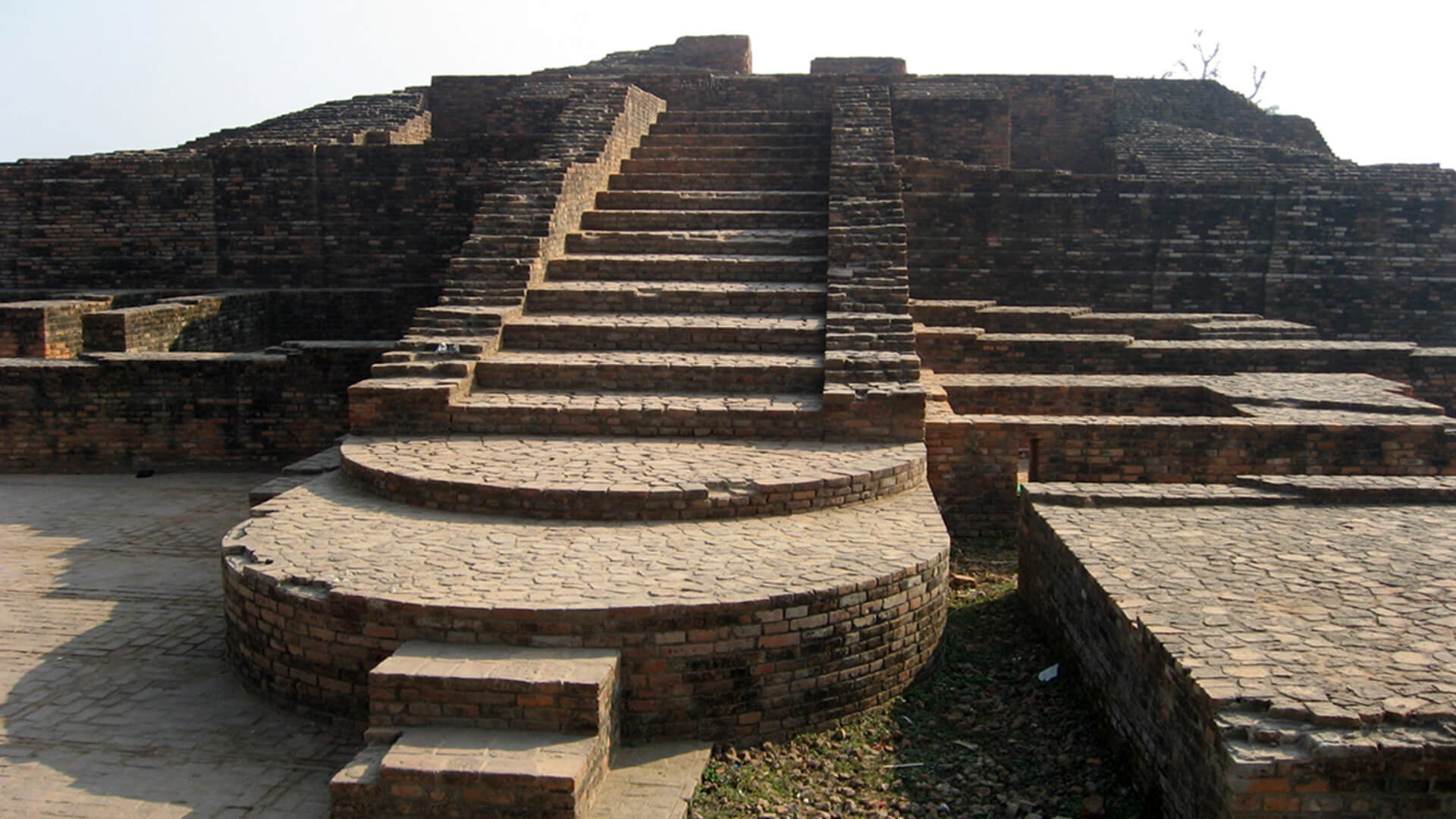
What is the Newari Culture? The World owes it to the Newari for its many Vajrayana Gurus
The term ‘Newari’ refers to the inhabitants of the Kathmandu Valley who have been living there for generations. The American researcher-scholar John Kerr Locke, who had gone there in 1959 to stay for 17 years and become a naturalized Nepali before writing the book “Karunamaya : The Cult of Avalokitesvara-Matsyendranath in the Valley of Nepal” (Note: Karunamaya refers to the deity of the Seto Machhendranath Temple, often called Jana Bahal (Jana Baha / Jan Bahal) , which means ‘the heart full of compassion’). Locke writes in the book that “The original inhabitants of the Valley are the Newars who still comprise about half of the population of the Valley. Here also there has been a meeting of races and cultures. The Newars have been active traders with the Plains and with Tibet … the Valley has provided a new home for the refugees from India … Throughout the hills the refugees tended to settle on isolated hillsides and in the shelters of inaccessible valleys … In the Valley, the newcomers from north and south were integrated into the Newar society … As a result, the term ‘Newar’ is not an ethnic term, but a cultural term, denoting the very rich and complex culture of the society of the Valley.”
Dr. Sarbottam Shrestha, Chairman of the Nepal Arniko Society, said that there are some twenty-plus ethnic groups of Asian and Caucasian descendancy who comprise the Newari people. These different Newari races do not mix-marry to keep the bloodlines simple. What keeps them as one Newari people is that they share a common spoken Newari and abide by the same lifestyle with all its rituals and customs.
Islam influence made its way gradually into India since the 6th century and exercised suppression onto Hindus and Buddhists in India throughout the 8th and 9th centuries, resulting in the exodus of many Buddhists who fled to the Kathmandu Valley. Buddhism also started its development into Tibet at the time and there was a lot of two-way learning and interchange. By the 12th century, Islam became the dominant religion in India, with Hindus and Buddhism nearly extinct there. But in Kathmandu, there were Buddhist universities and many outstanding Buddhist lecturers were Dharma masters of the Vajrayana tradition, attracting students from places as far as Tibet and Mongolia.
According to Dr. Sarbottam Shrestha, in the early development of the Tibetan Buddhism, many great Dharma masters, or gurus as they are locally referred to, had lived and practiced for years in Kathmandu before continuing the journey into Tibet. In the case of the Great Padmasambhava the stay in Kathmandu was at least 12 years. Guru Atisa likewise spent quite some time in Kathmandu before going to Tibet, whereas Guru Marpa practiced 3 years at Patan. It practically can be said that many great gurus who had strong impact on Tibetan Buddhism all passed through Kathmandu. Their stay in Kathmandu at different intervals were all documented to illustrate how almost a millennium ago the Valley of Kathmandu was greeting great Vajrayana gurus one after the other.
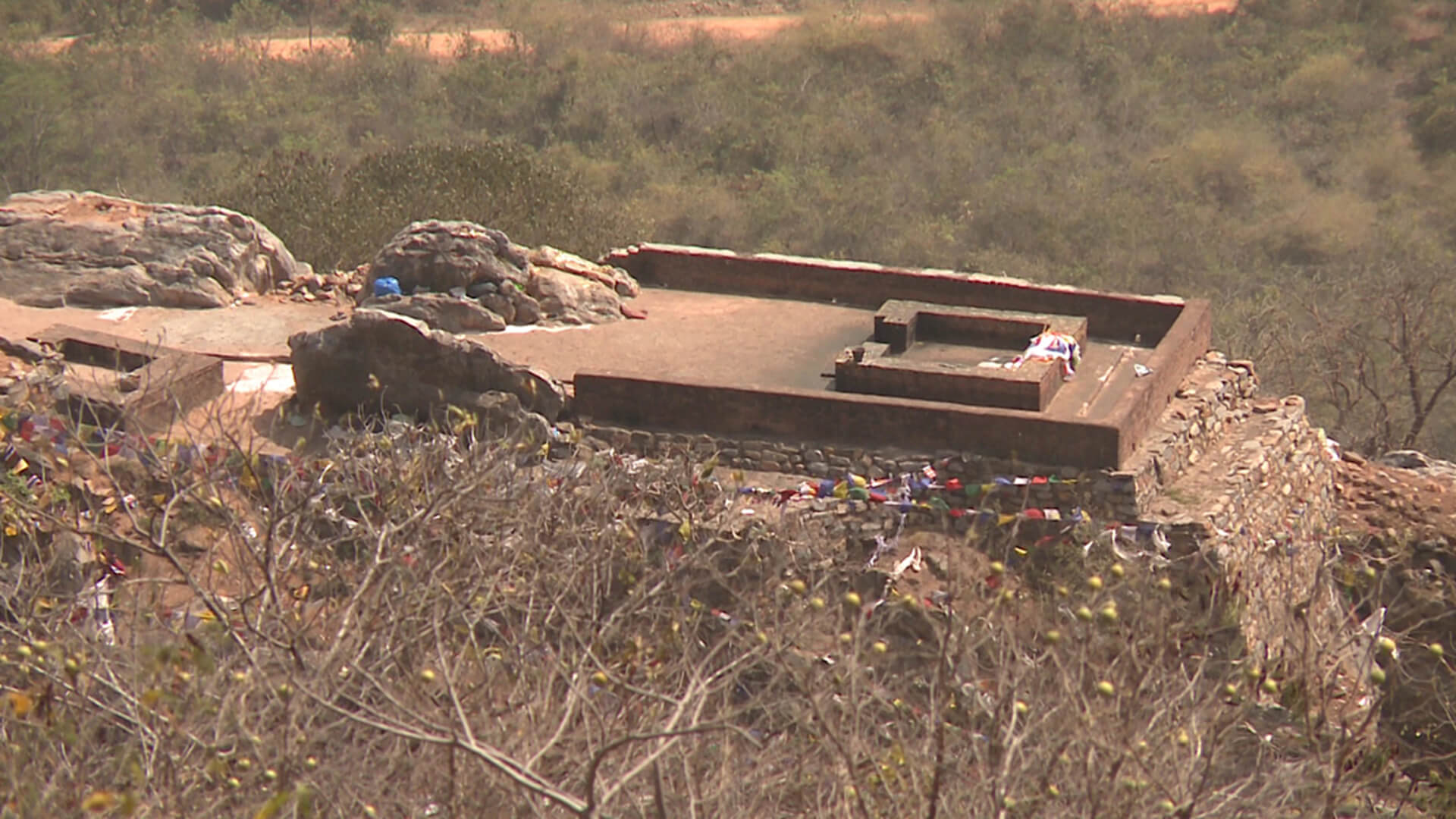
Newar Buddhism - the Original Teachings of the Buddha lost to the World
Buddha Shakyamuni was born more than two-and-a-half millennia ago and Buddhism still flourishes today in many parts of the world. But with the passage of time and the geographic differences, Buddhism has developed into many varying traditions, with Mahayana, Theravada, and Vajrayana as the best known major Buddhist sects. Have you, however, heard of the Newar Buddhism?
Buddhism for a very long time was not the main religion in India and Nepal and was under suppression from time to time. The Newari people, however, have always stayed faithful to Buddhism. According to archeology professor Sukra Sagar Shrestha, people who speak Newari are Newari people, and the Newari are Buddhists. No Newari can ever be King in Nepal, because the Nepali King must be a Hinduist. The Newari have been suppressed for generations and life is not easy for them. They are not eligible to become the King, they are not even eligible to become a Buddhist monastic. They have to go abroad to become a monastic, or else they disrobe and stay secular. Consequently, the Newari have always been protecting Buddhism by assuming the role of teachers.
The Dharma that the Newari uphold and practice is rather special. As the Buddha was born in present-day Nepal, many people subscribe to the notion that Buddhism as preserved and still being practiced today in Nepal must theoretically as well as logically be closer to the original version as at the time of the Buddha’s.
It is often claimed that the Newar Buddhism provided the origin of Vajrayana and gave rise to the Tibetan Buddhism, while it remain’s the world’s only Mahayana tradition in Sanskrit. Prof Sukra Sagar Shrestha couldn’t agree more, except that “the real Vajrayana did not originate in Nepal, but came from Kashmir, India.” The Vajrayana tradition had its origin in Kashmir, but gradually migrated to Kathmandu. The process began to pick up momentum with Islam becoming more influential over time, with many Buddhist Dharma teachers arriving in Kathmandu, nourishing Vajrayana more profoundly before the sect spread to Tibet.
In other words, Vajrayana in Kathmandu pre-dated Tibetan Buddhism, and for all kinds of reasons the Newar Buddhism has been much less known as Tibetan Buddhism, consequently giving rise to the mis-concept that Vajrayana equals Tibetan Buddhism. Dr Sabottam Shrestha made an analogy that involves Zen as an example - the Japanese introduced the Chan/Zen branch of Buddhism to the West and the West somehow believe that Chan/Zen originated in Japan.
The Newar Buddhism is probably the direct and longest inheritance of Buddhism personally passed on by the Buddha and his disciples. It is also the earliest source for the Vajrayana tradition. Behind the veil of mysteries is a wealth of rich contents awaiting our exploration and research.
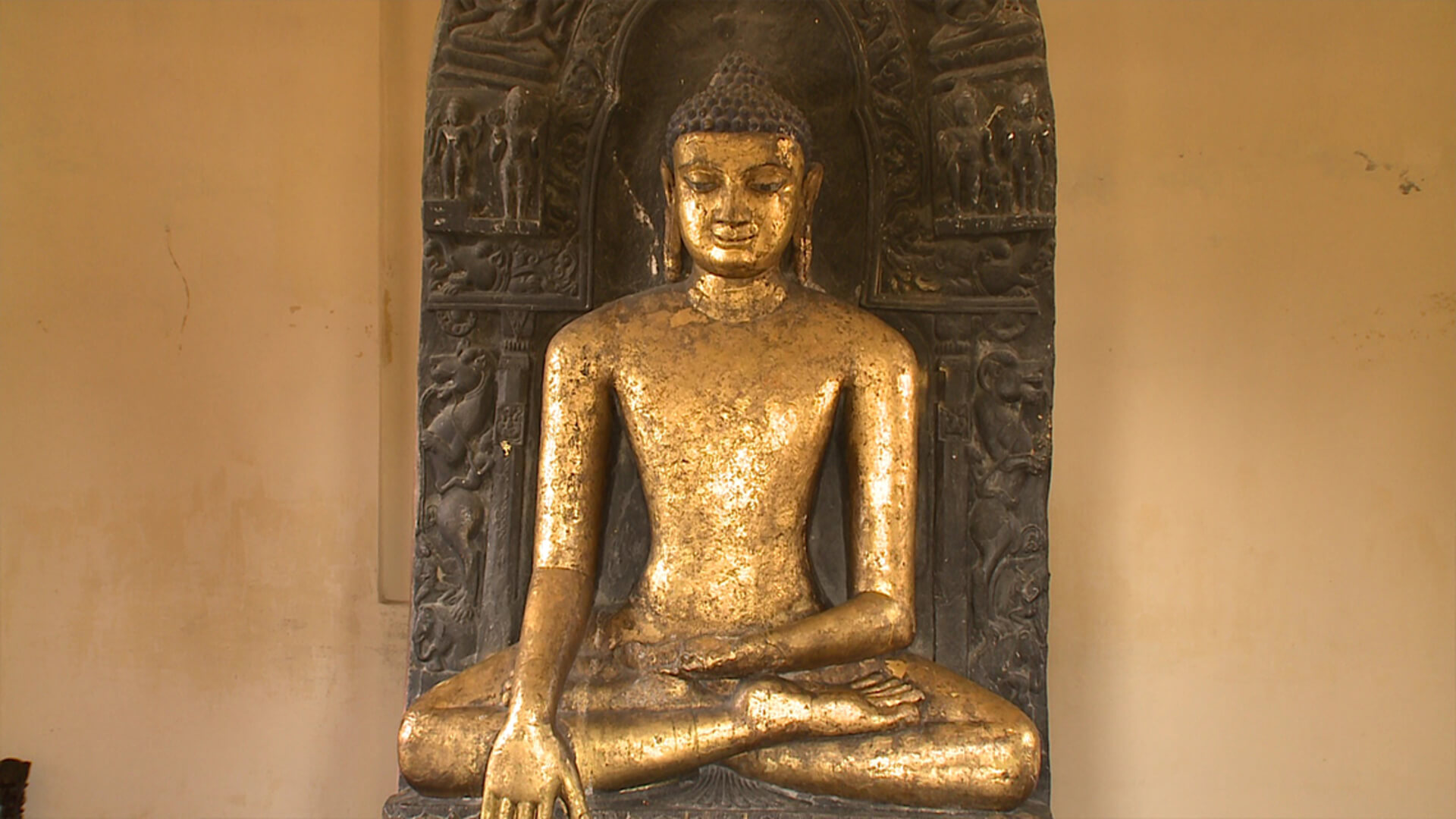
Stories about the Sakya Clan as the Buddha’s descendants in Nepal
There is a unique clan by the name Shakya in Nepal and legends have it that they are descendants of the Buddha’s. According to Prof Sukra Sagar Shrestha, however, they are not direct descendants, because historical records tell of the Buddha’s only son as having become a Buddhist monk and with that, the bloodline ceased to go on. The Sakya clan, therefore, ought to belong as offsprings of the Buddha’s kin and relatives.
Dr. Sarbottam Shrestha goes further to explain that there are Newar people by the surname Shakya but they are not necessarily all related to the Buddha. During Buddha’s own time, there were political incidents in his birthplace Lumbini that triggered the exodus of the Sakyas and some arrived in Kathmandu. It can be argued that Newar people with the Shakya name could have been related to the Buddha. Our understanding, however, is that there are Sakyas among the Newari whose ancestors did not come from Lumbini. Historically, Buddhism was the leading religion during the Licchavi Dynasty, but that was not the case during the Mallas Dynasty and Buddhist monks were forced to disrobe and become secular again. Such political suppressions were not isolated events and many such monks took up the name Shakya after they had been forced to become secular again. That explains why we clearly see that the Sakyas are of different ethnic descent and bloodlines. Some are Caucasians, some negros, some Asians, and some directly Indian. The evidence runs contra to the claim about direct lineage to the Buddha for all Sakya.
The Sakyas have always been staying true to Buddhism ever since the time of the Buddha. Throughout the Indian history, Hinduism was more often than not the dominating religion of the state and by sheer tradition, kings and top-ranking officials were mostly Hinduists and their mentors were Brahman. Against that background, it is impressive that the Sakyas have always been true to Buddhism and they preserve the inheritance of Buddhism. On the one hand, the Buddhist Dharma emphasizes compassion and inclusion and avoids conflict and confrontations, as well as tolerance and acceptance when suppressed. And, on the other, Buddhists believe in cyclic Karma and reincarnations and that merits beget merits and vice versa. Such core values overlap with those of Hinduism and make it possible for the two religions to co-exist or even converge to some extent.
Prof Sukra Sagar Shrestha also pointed out that only Buddhist sculptors were capable of statues of wood and stone, but Hindus would refrain from it as their religion forbids idols and icons. As a result, sculptural works at the imperial courts and royal palaces have always been performed by Sakyas and they skillfully/stealthily created images and statues of Buddhist Bodhisattvas in their commissioned work, which ever so quietly became a way of preservation of Buddhism, and in many cases, even examples of diversified symbiosis of Buddhism and Hinduism.
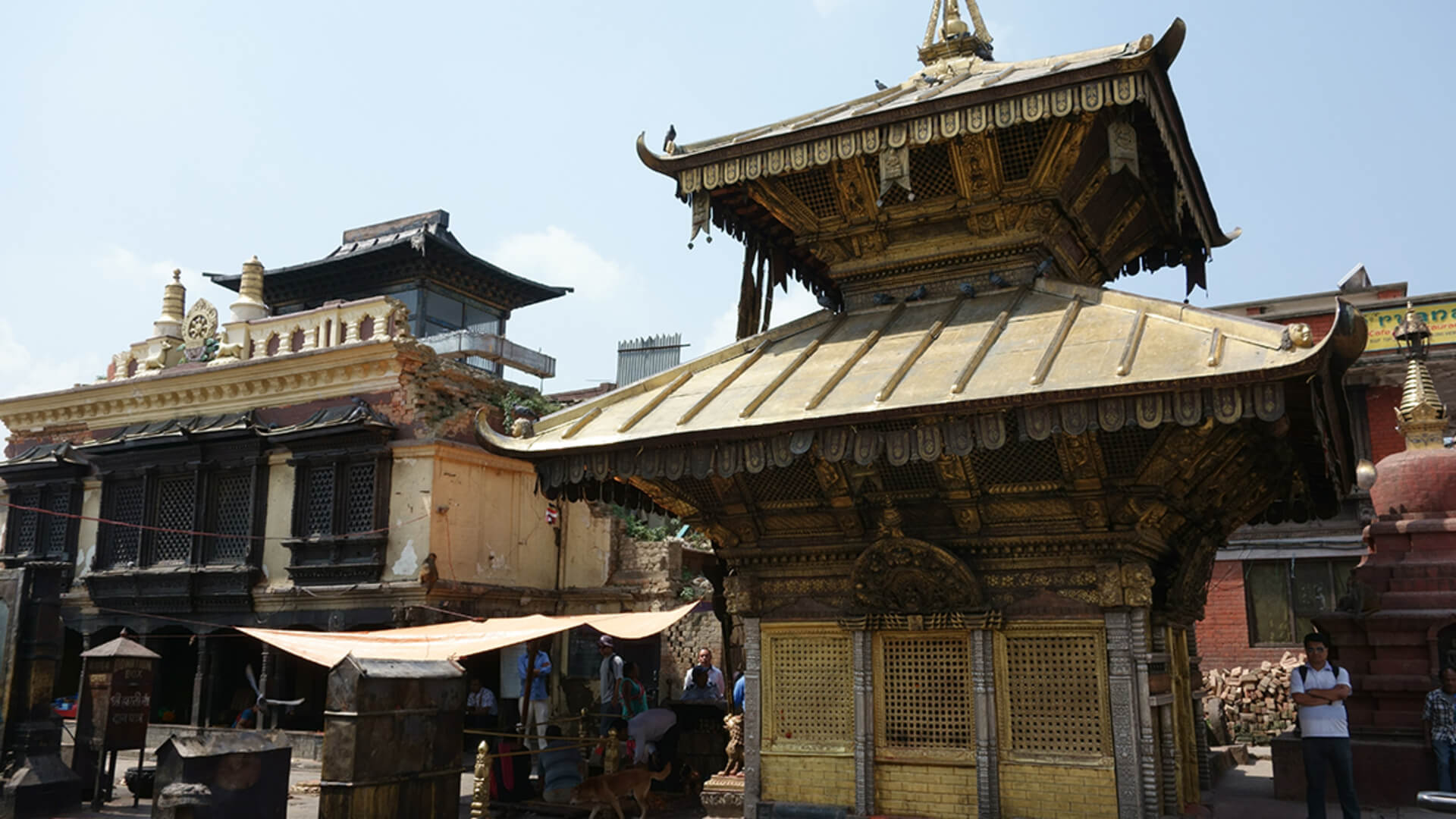
The Significance of Patan
Historically the Academic Center of Buddhism
Of the four major temples dedicated to the cult of Avalokitesvara Bodhisattva in Nepal, the Temple of Rato Machhendranath is most important and it is located in this ancient city within Kathmandu. As the seat of kings of early dynasties, Patan received four stupas for its four sides marking boundaries as ordered by Ashoka, and there is still the main Ashoka stupa downtown near the Central Square of Durbar. Put differently and succinctly, Patan is an important base area for early development of Buddhism and has been an academic center of Buddhism, while offering a sanctuary for precious Buddhist art.
Prof. Sukra Sagar Shrestha also noted that Patan used to have a lot of natives (Newari and from the Sakya clan) who would build and maintain their own temples. Such temples then became the medium to bear evidence and proof of outstanding Buddhist art in an array of forms such as in gold jewelry, stone sculpture, wooden carvings, from the making of Buddhist statues to religious paintings. Many artists then established themselves as top professionals of their trade.
Buddhist art that flourished in Patan
As early as in the 8th and 9th centuries there were frequent contact and interflow between Kathmandu and Tibet, and it was widely known in Tibet that many first-rate artisans and craftsmen for Buddhist art were in Patan. As a result, many Buddhist figures, statues, and cult objects for rituals were commissioned to Patan craftsmen. The severe coldness of Tibet led to it that artwork gilt over in gold would be completed in Patan before brought back to Tibet, and the business helped created a great wealth for the city of Patan and people still see many religious statues and temple rooftops gilt over in gold as created in Patan’s old times. The four leading families of Patan made major contributions thus accordingly, and there they even built a Temple of Gold in Patan.
The Araniko Legend
The reputation of outstanding mastery of Buddhist art many Patan residents were capable of also reached China and we share the example of Maestro Araniko (1245 - 1306) of the Mongolian Yuan dynasty, who was from Patan, Nepal, and was celebrated for his work in architecture and sculpture. The Mongolian Yuan emperor Kublai Kahn, a devout Buddhist, gave the decree that a Temple of Gold be constructed in Tibet by the 5th Dharma patriarch of the Sakya sect of Tibetan Buddhism, Drogon Chogyal Phagpa. Phagpa sent for craftsmen and architect from Patan, and Araniko helped lead a delegation of some eighty-plus people to Tibet for the project. Thereupon began Araniko’s long stay of 45 years in China, building stupas and temples testifying to the finest of Buddhist art. Over that stretch of time, he built 3 stupas, 9 temples, one Taoist monastery and two shrines, besides the countless statues. The famous White Stupa at Beijing’s Miaoying Temple stands tall as a fine example of his work.
Araniko trained and groomed quite a few reputable talents of architecture and craftsmanship. The famed sculptor LIU Yuan of the Yuan Dynasty was one of them. The Emperor, Kublai Kahn, granted him the title Superintendent in charge of all crafts and the possession of the Tiger Emblem of Silver which meant military prowess. His posthumous title was ‘The Duke of Min-Huei to the Kingdom of Liang’. In the eyes of the Nepali people, Araniko is a hero and his influence in China remains discernible even today. The National Pavilion of Nepal for the 2010 Shanghai Expo was name after him as the Araniko Center.
